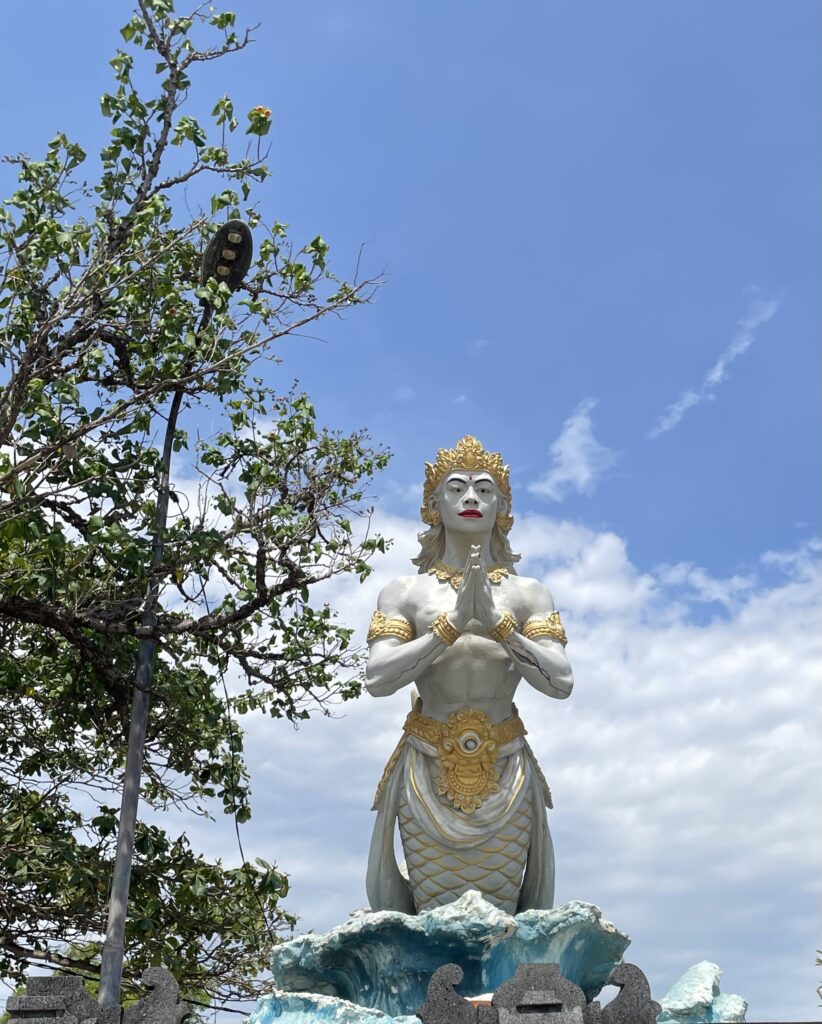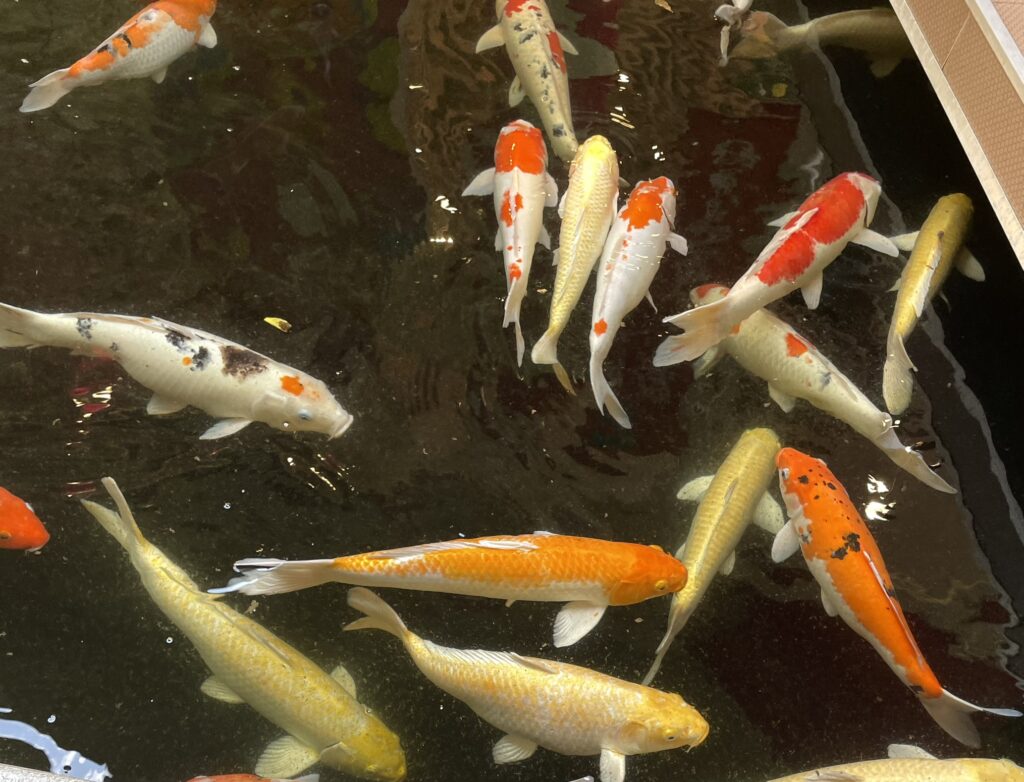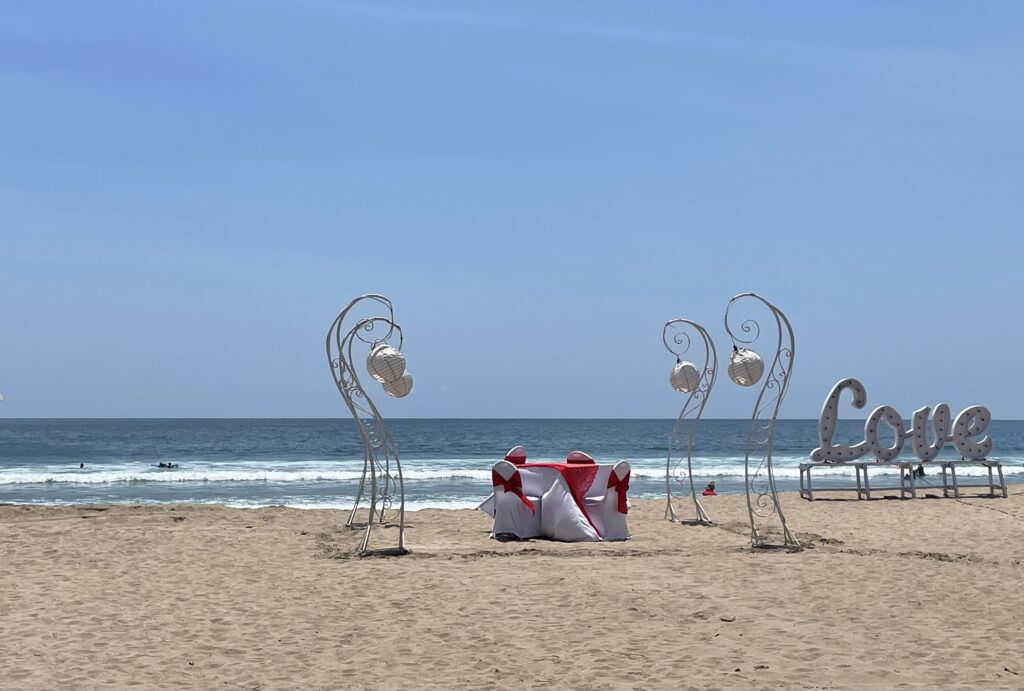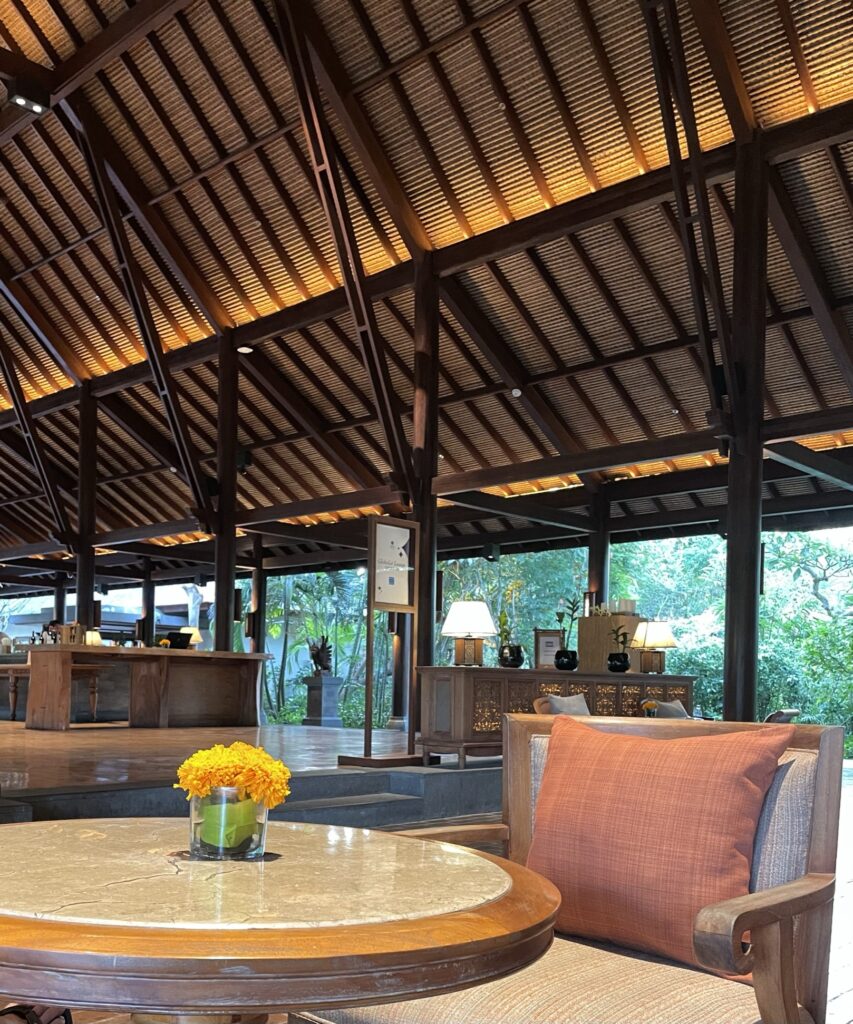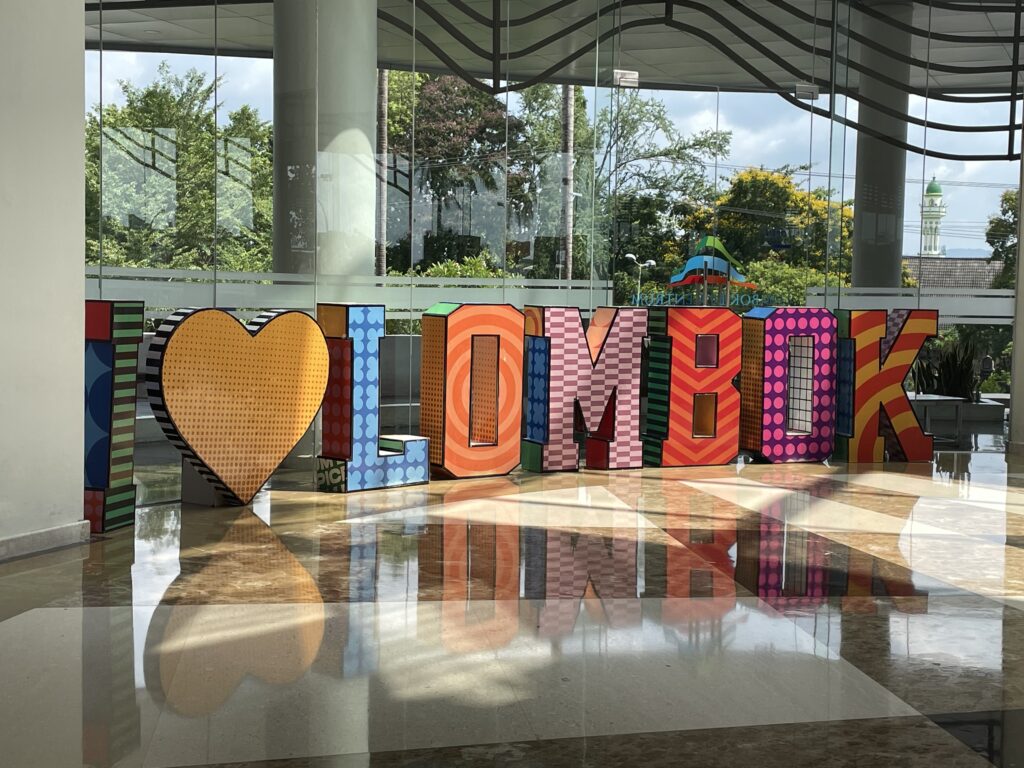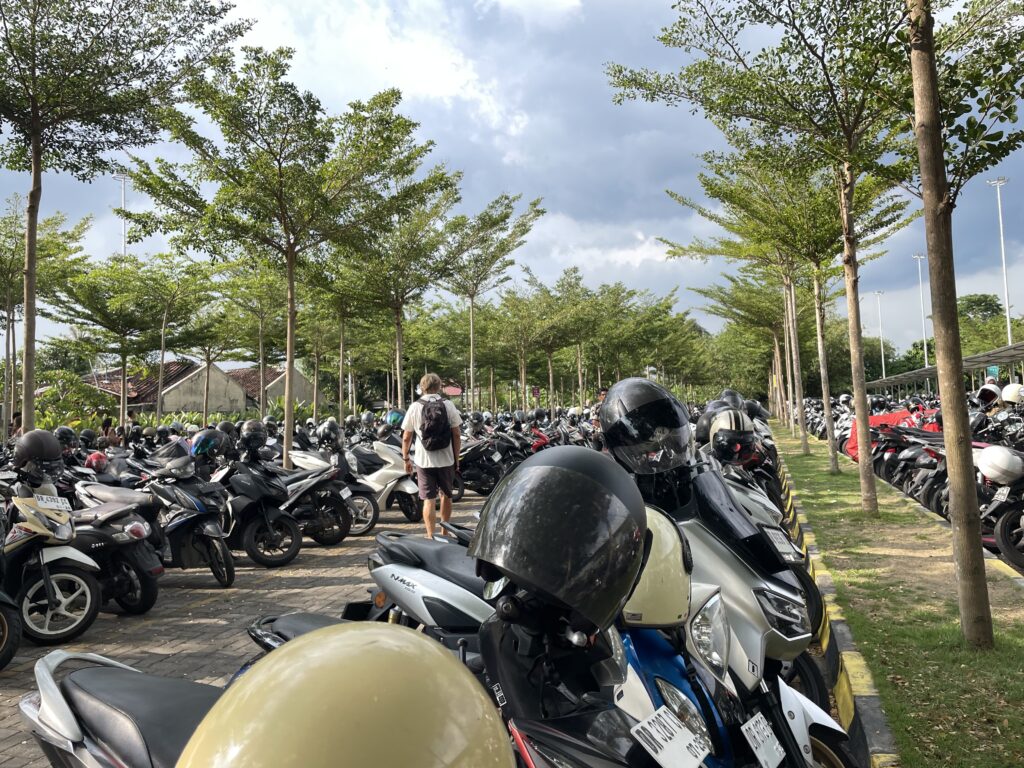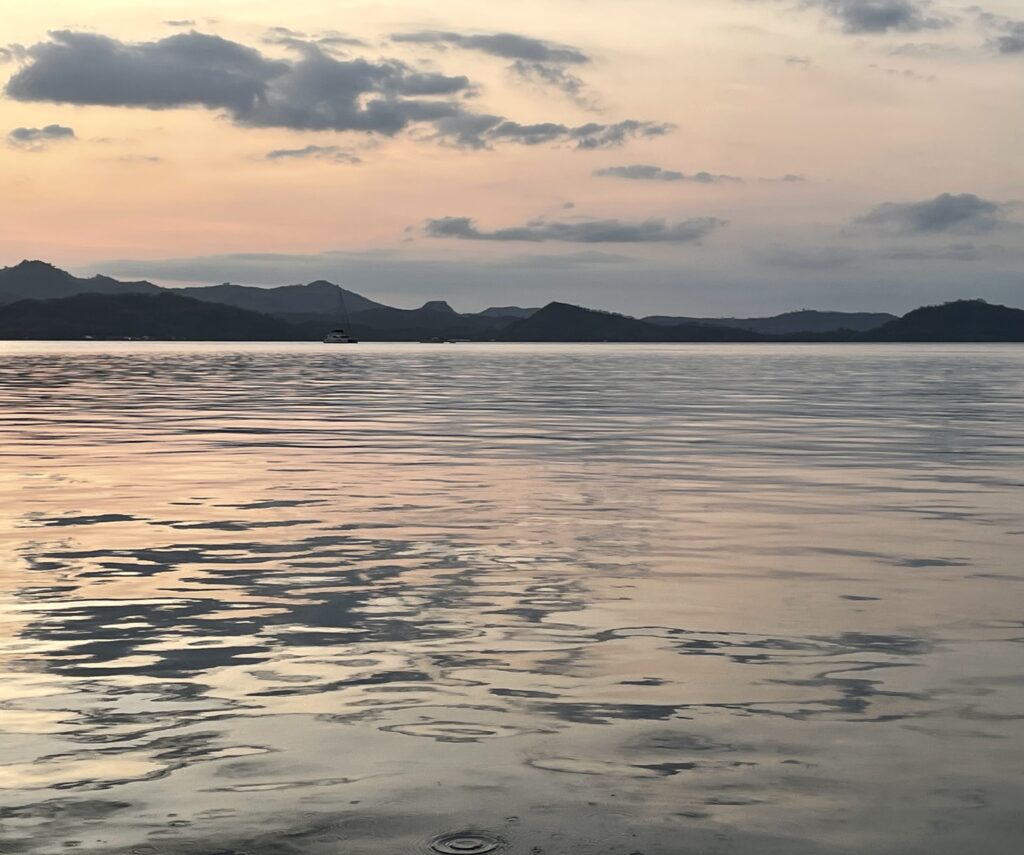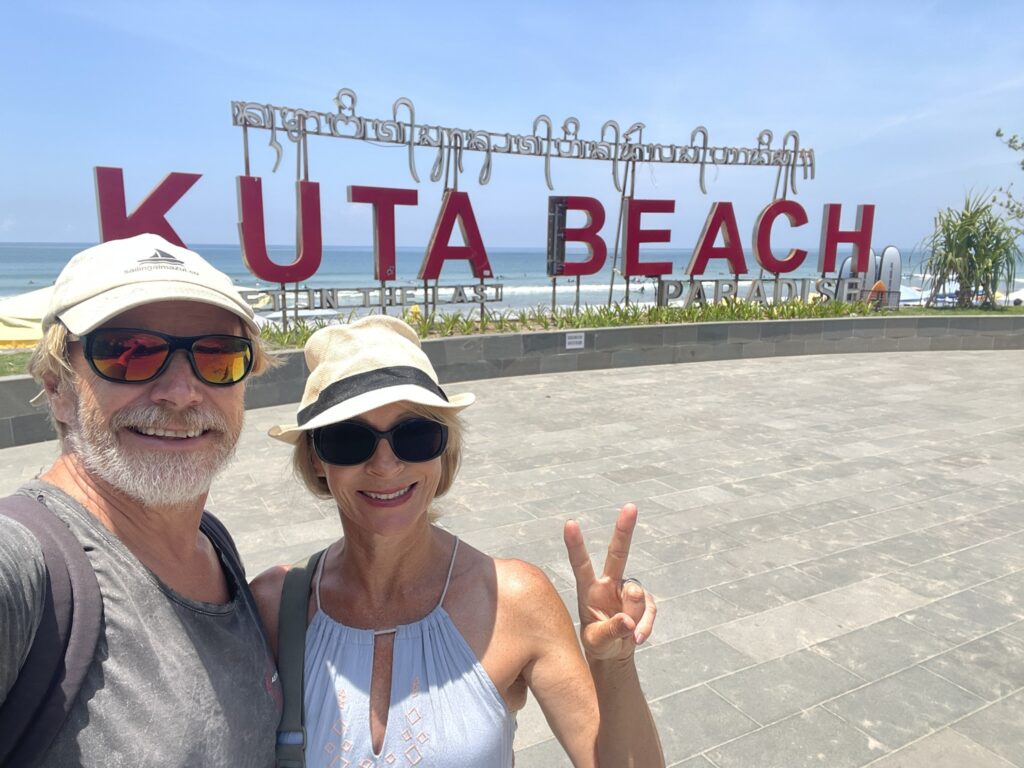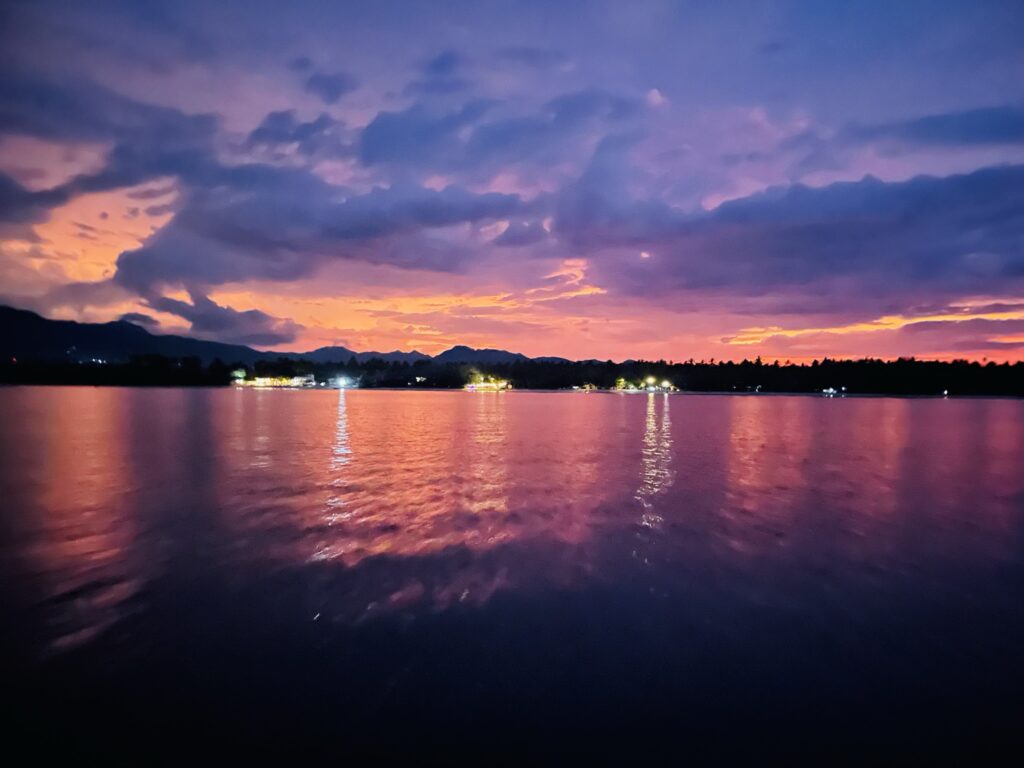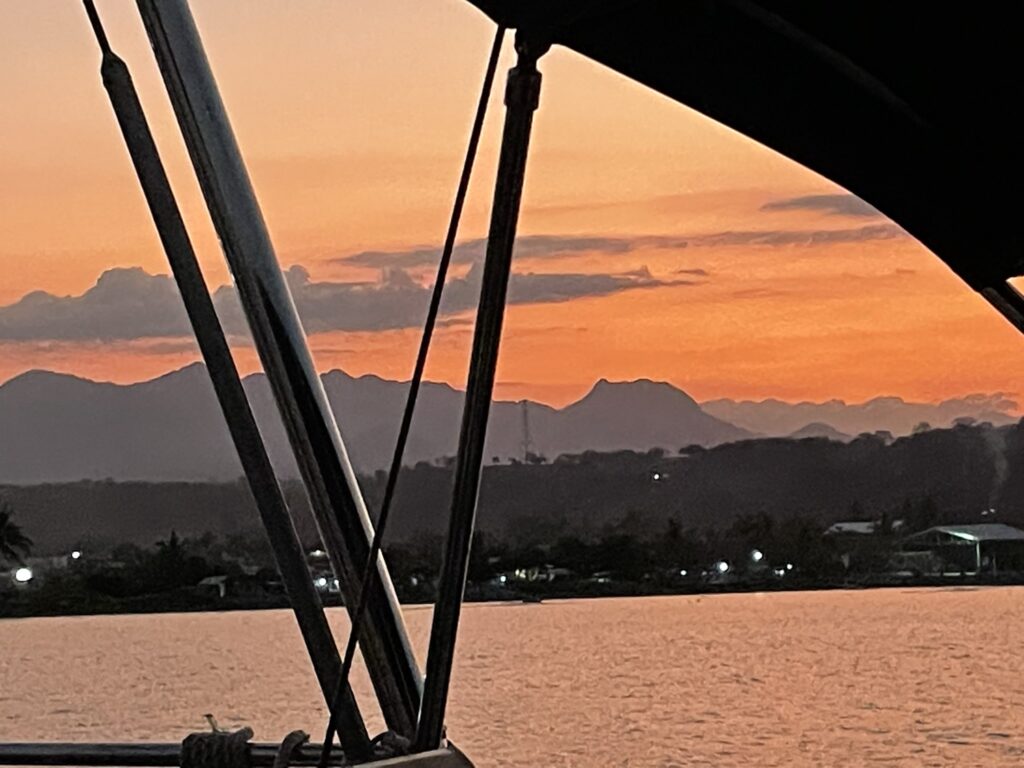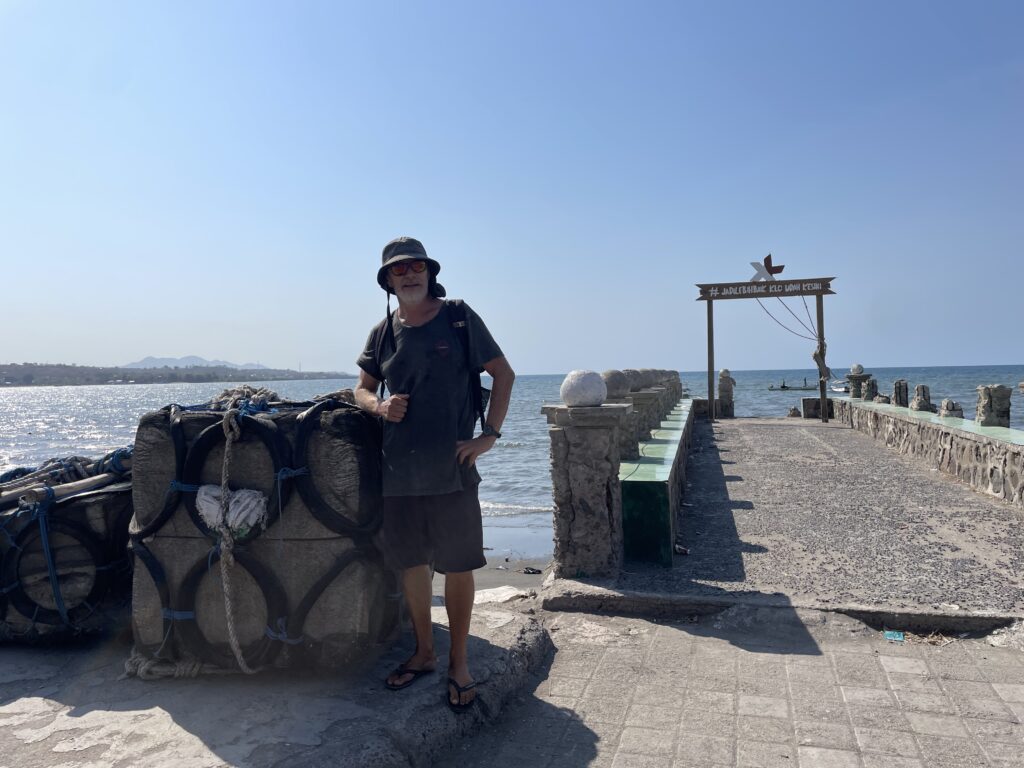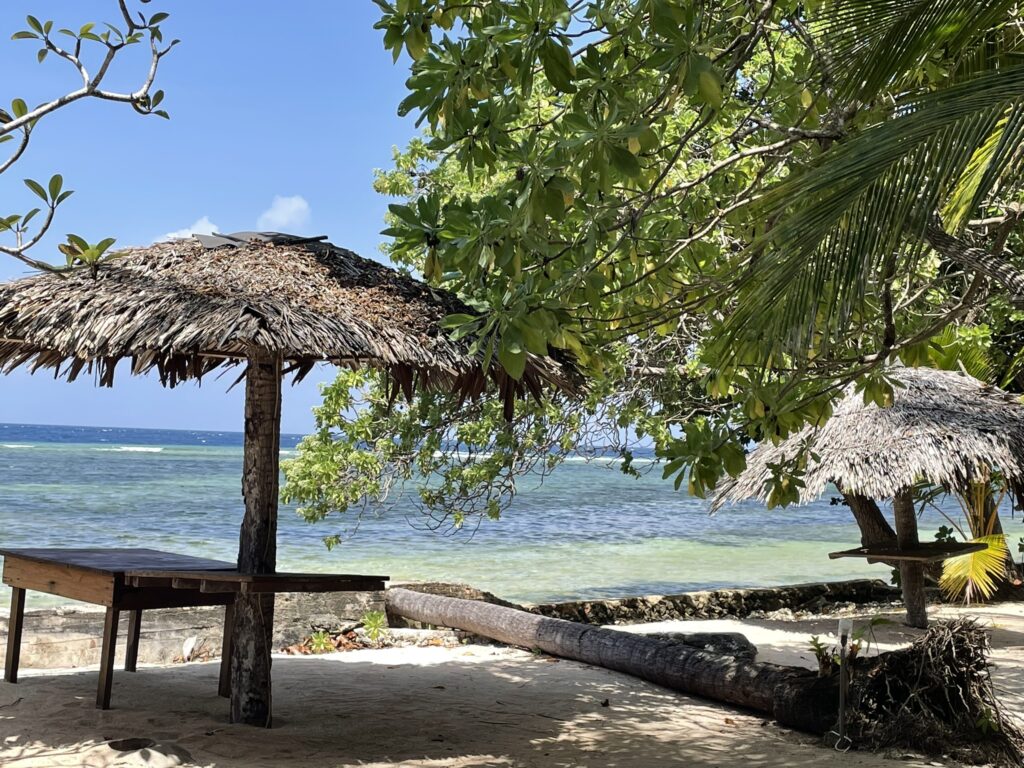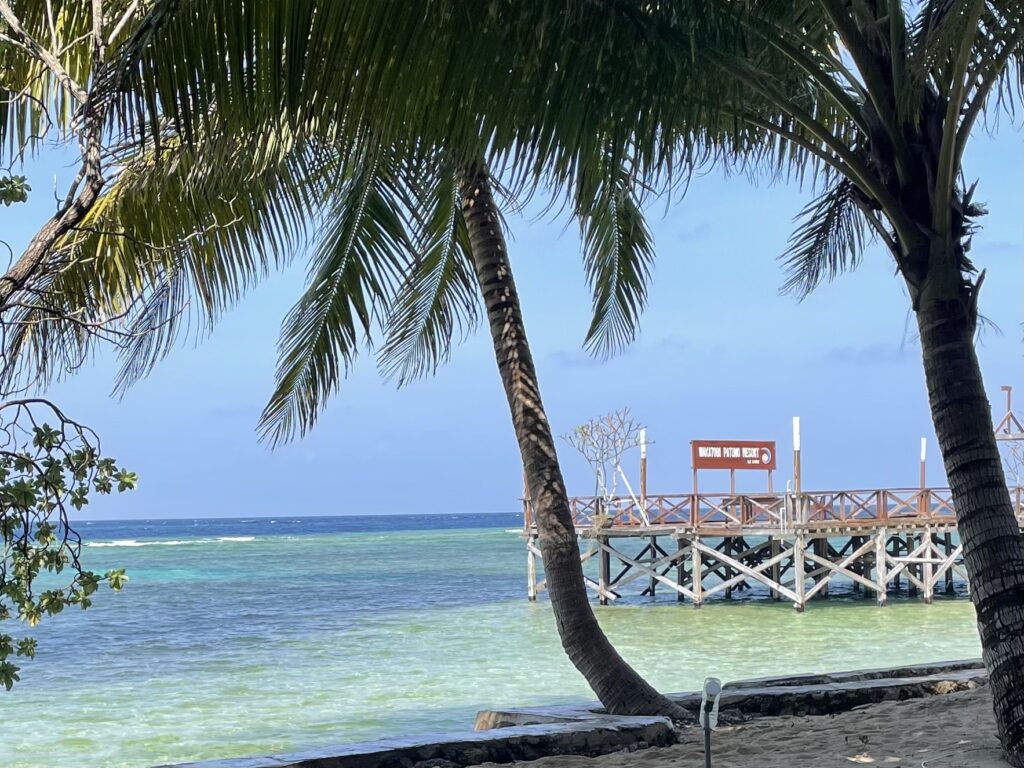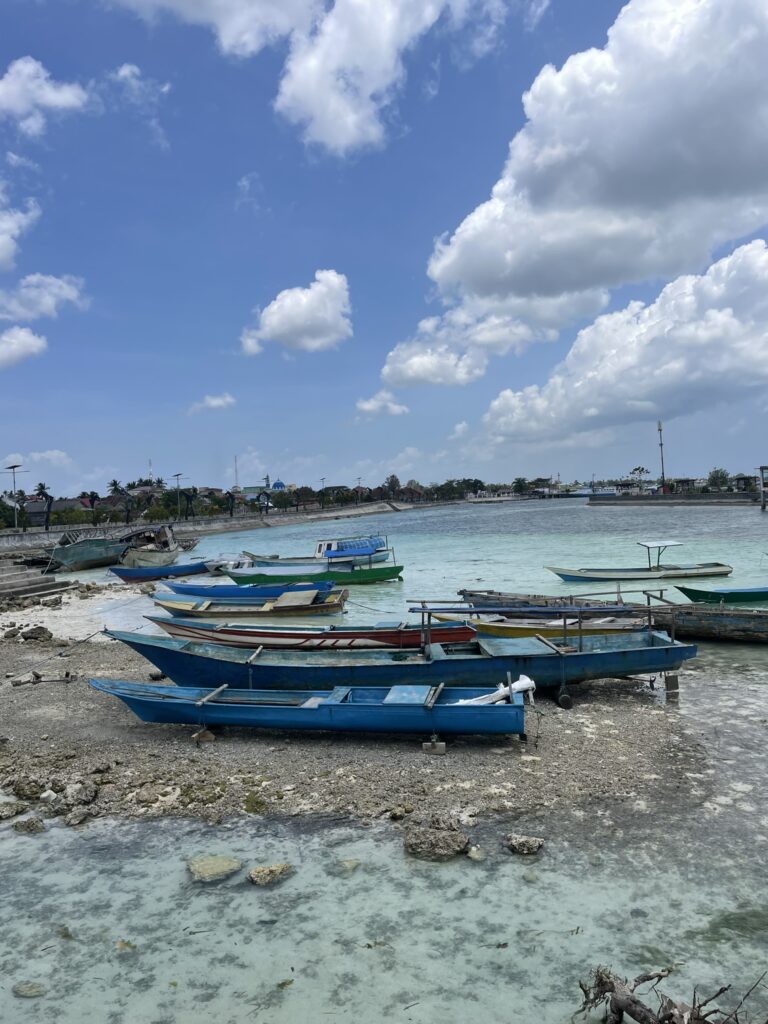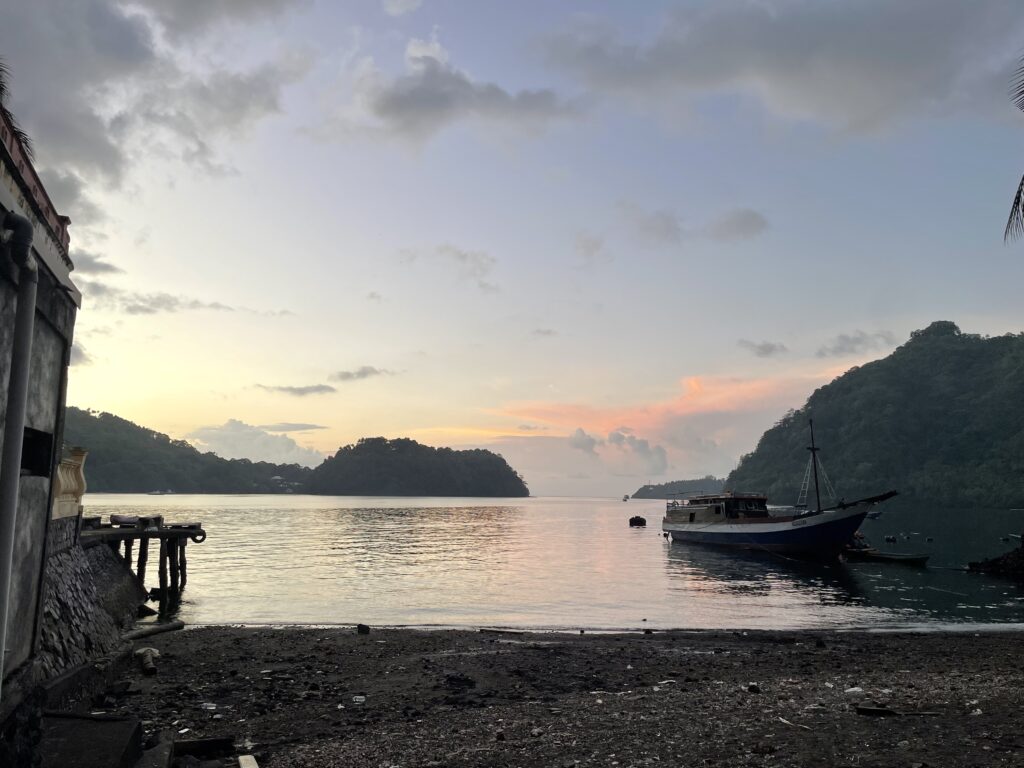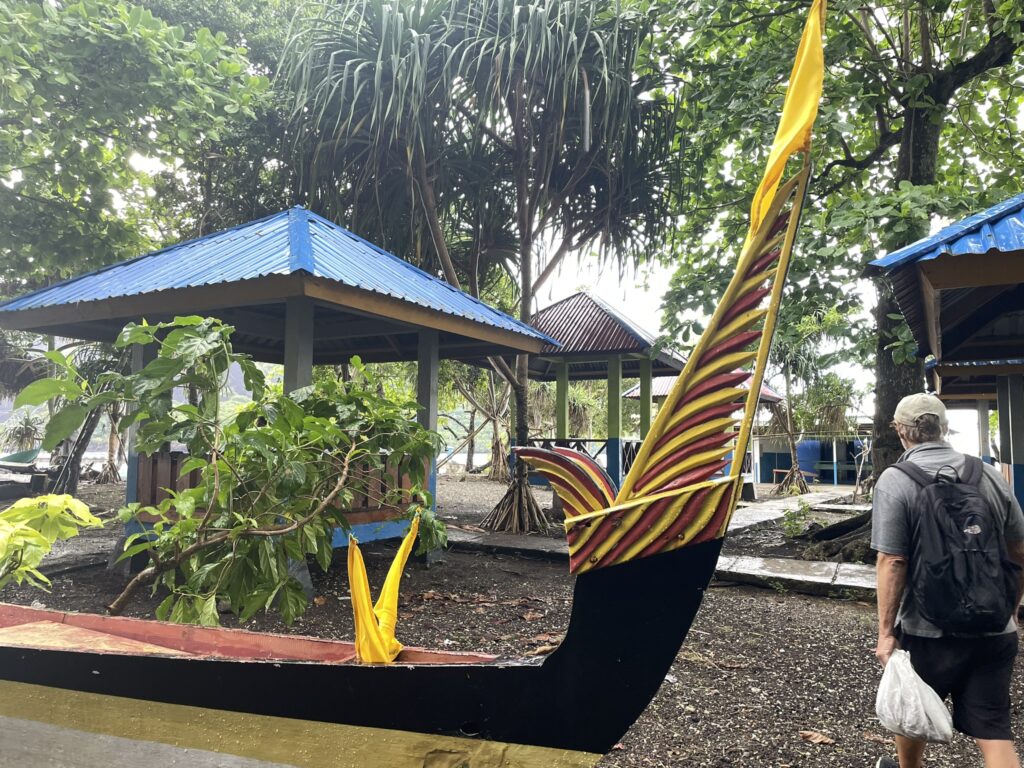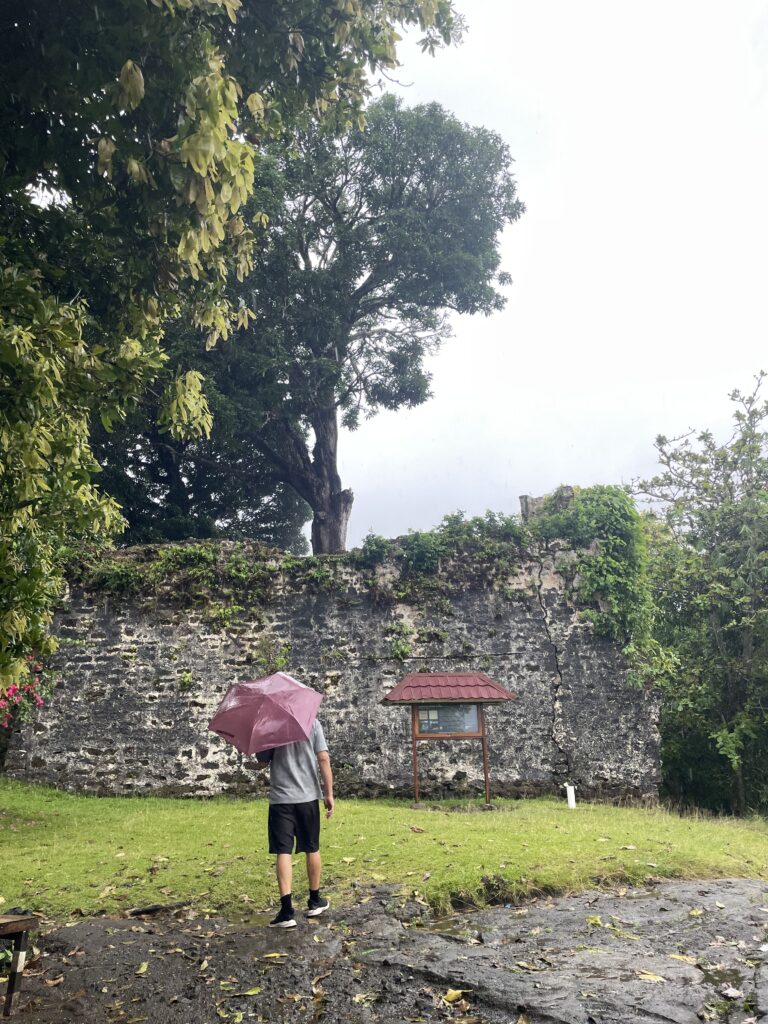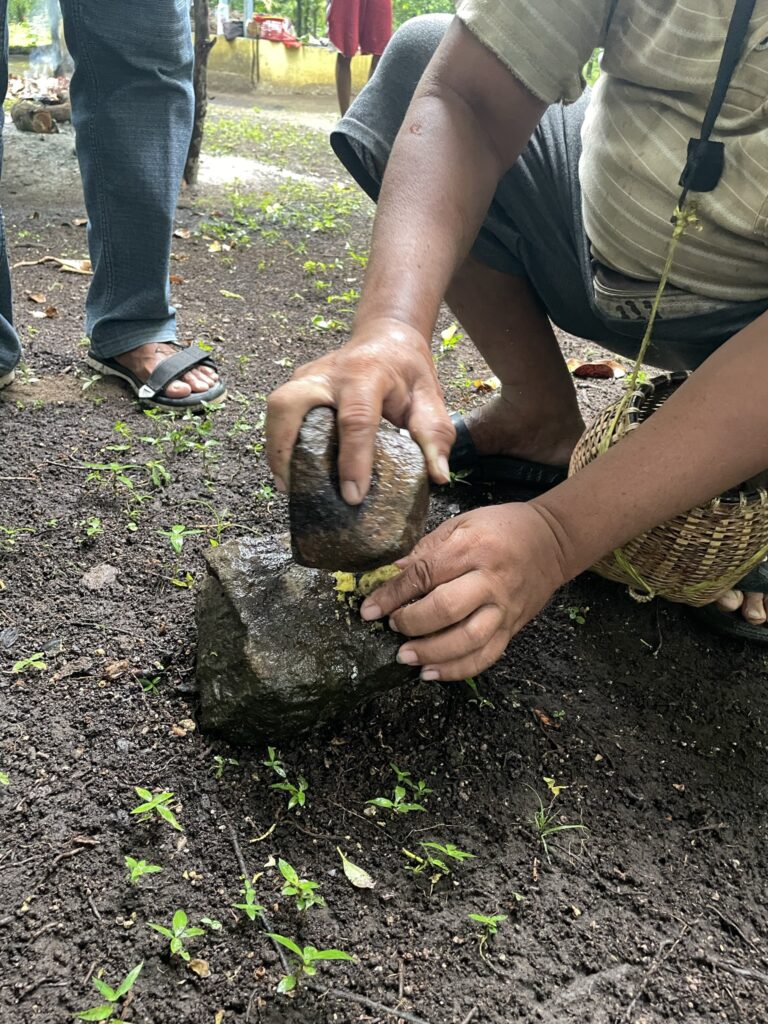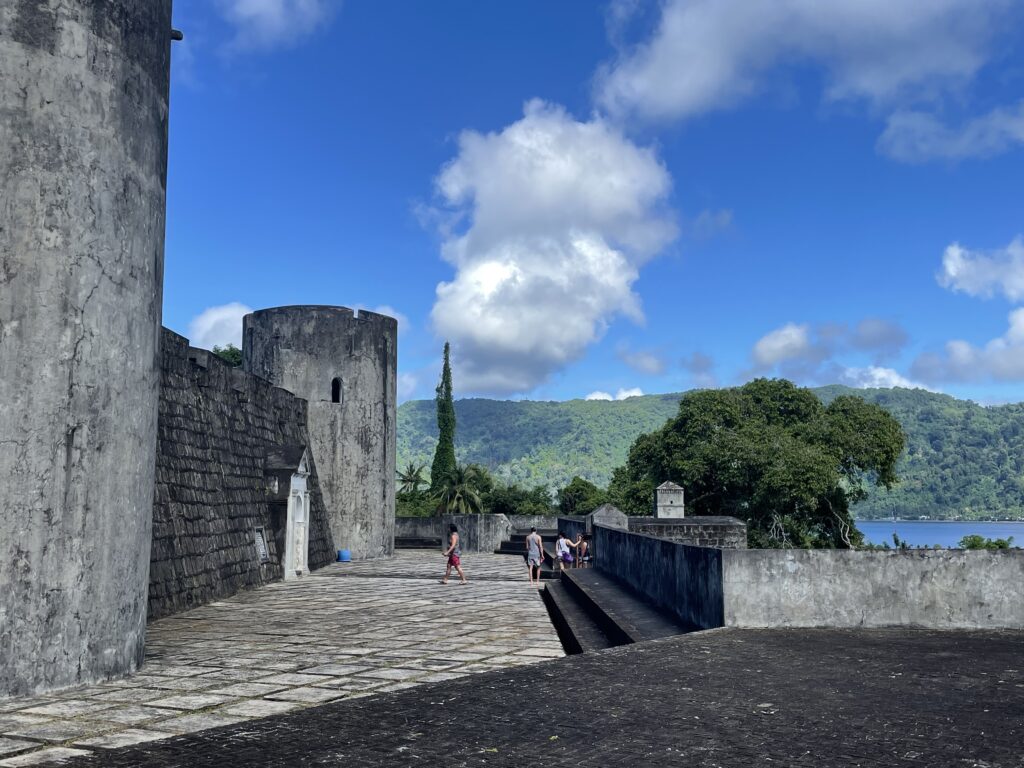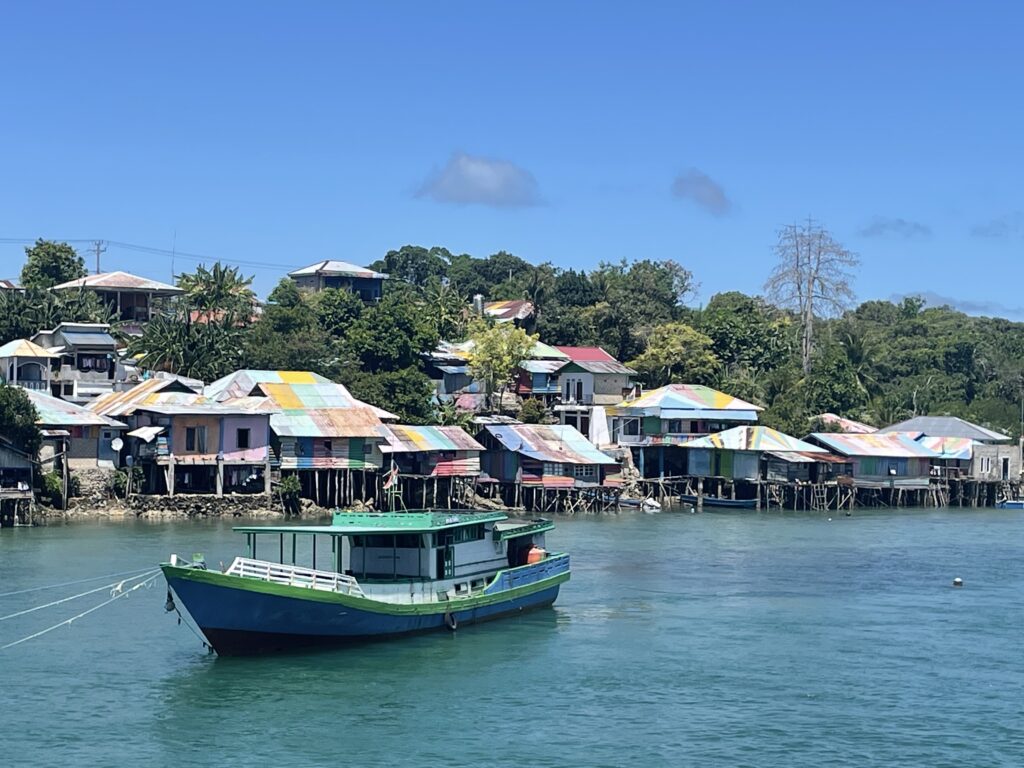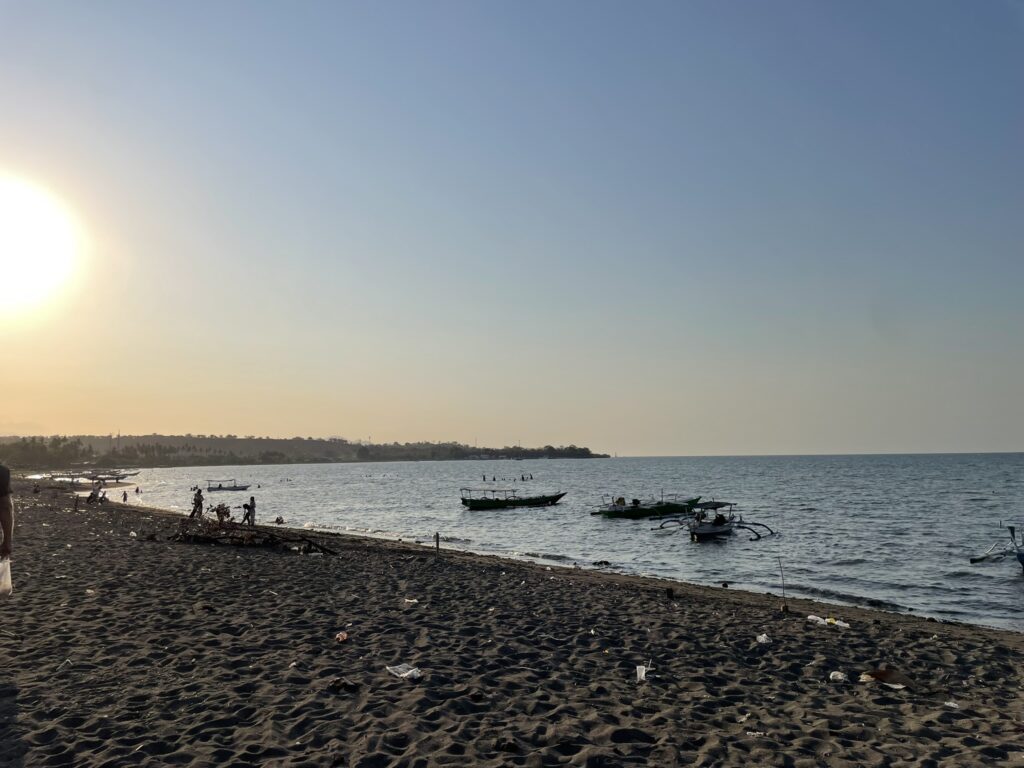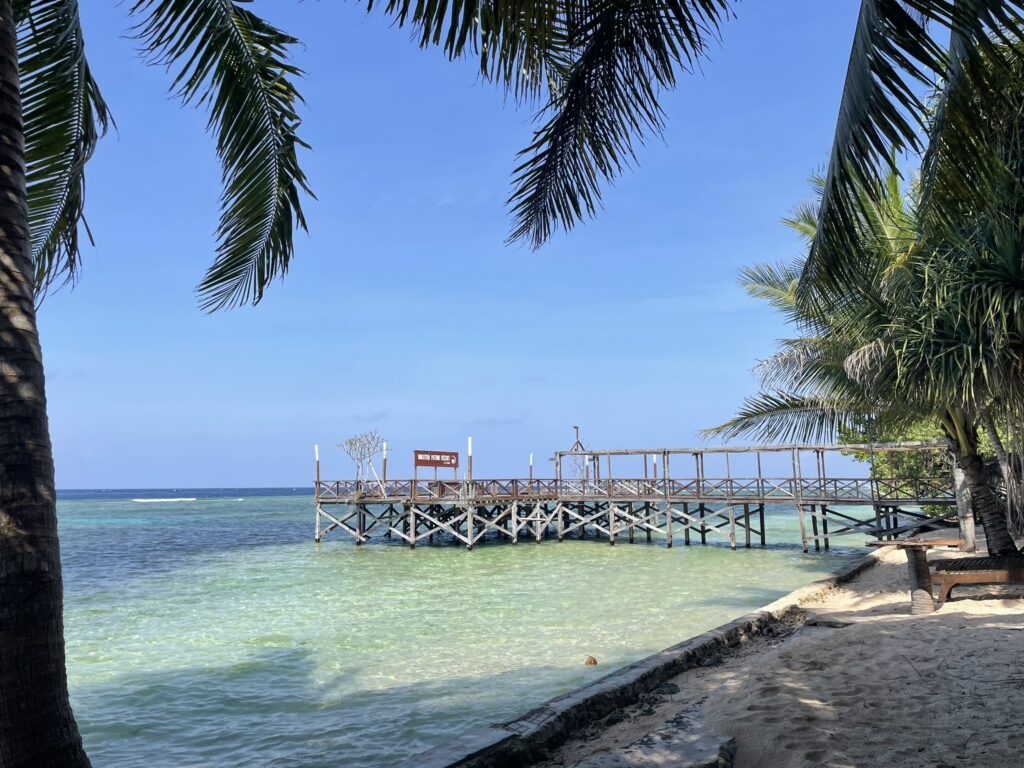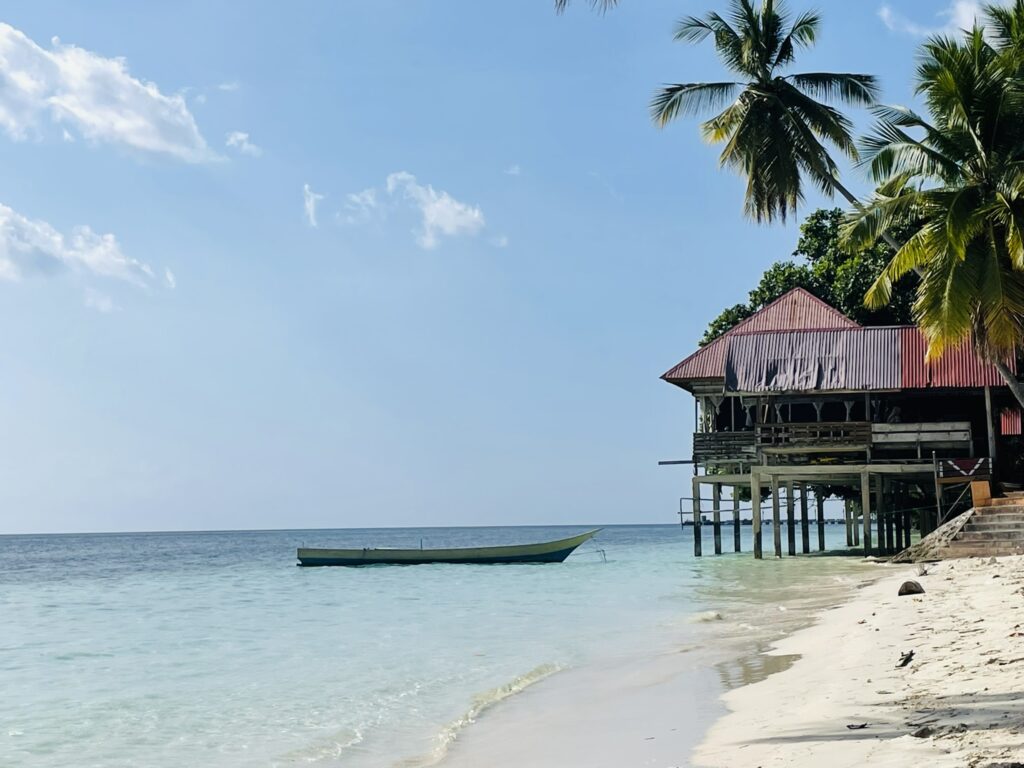
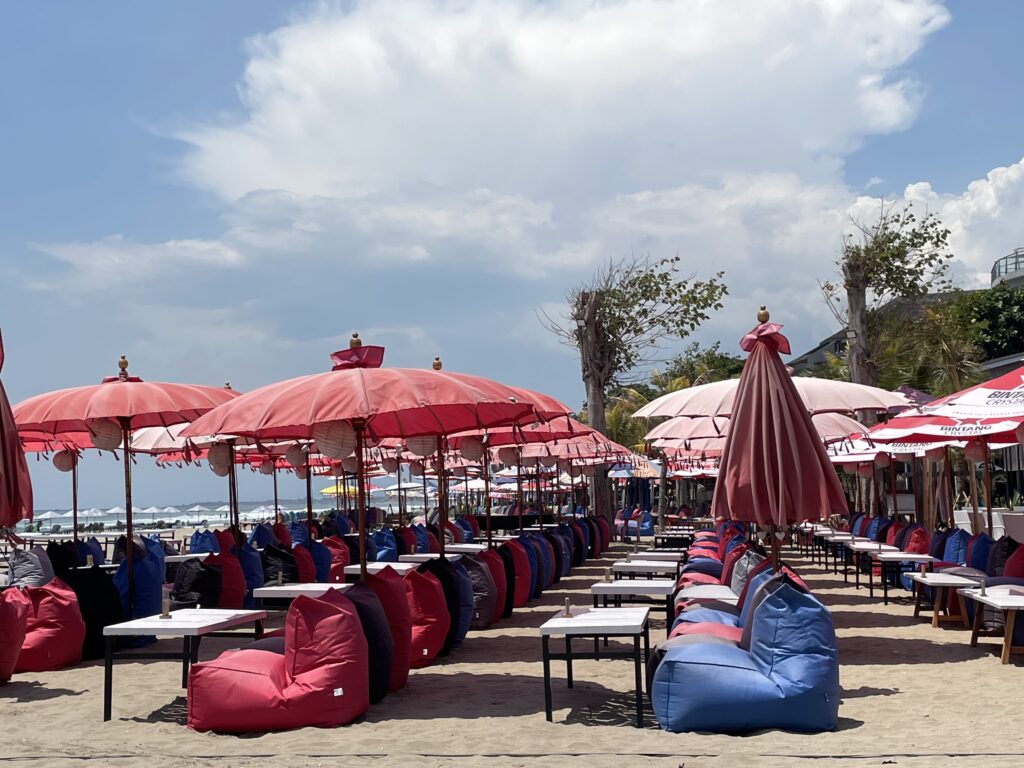
Travelling in Indonesia warmed our hearts many times, and our bellies constantly!
Of the many faces Indonesia has, I’m glad we met some of the more serene ones first. From the tiny Kei Islands in Eastern Indonesia to bustling Bali in the middle, one could be mistaken for having crossed a border somewhere; so different was the experience.
I have thus wrestled with how to describe our time in the less touristed islands of Indonesia. I will begin by saying that we travelled east to west, which means from zero tourism to maximum tourism. This gentle introduction allowed us to enjoy the remote tropical island beauty and the sunny, curious nature of our hosts while finding our feet in Indonesian culture. (nb we are only half way so far. The boat is in Lombok and we ferried to Bali. Lots more to come. )
Indonesia’s population is around 280,000,000 but the population density is what really floored me. You will meet 143 people/km2, as compared to 3.6/km2 in Australia and 26/ km2 in Sweden. This statistic is evident in cities of course, but also when driving or walking around apparently in the middle of nowhere, and then up pops a village clinging to a steep hillside. The familiar greeting “Hello Mr” emanates from the shade of a tree, and soon enough we are having a halting, smiling, gesticulating conversation.
To get to Indo from Australia we set off from Thursday Island and traversed the Torres Strait into the Arafura Sea to enter the Banda Sea; home to the far eastern Indonesian Kei Islands and one of the world’s most stunning marine biodiversity hotspots. It’s renowned for coral reefs, underwater volcanoes, and rare marine species. These islands are so tiny that it is difficult to find them on a map even if you know where to look. Consequently I expected our arrival formalities to be conducted at a table under a palm tree on a beach, (or something a little like that) but instead we arrived at Tual, a bustling town of some 200,000 people.
Tual is home to a largely Muslim population, and the prayer times were a soundtrack to our time there, and Indonesia more broadly. We awoke to the dawn prayer (Fajr) at 4.30am farewelled the day at 8pm with the last prayer (Isha).
The 5 day sail was pleasant and uneventful until the last couple of days, when things really got interesting. This is when we encountered the first of what would be thousands of fishing nets. Many were unmarked (eek!) and even the marked nets were invisible to the naked eye until much too close for comfort, meaning there was no safe way to sail at night. More about that later.
Our sunset arrival into the serene waters of the Kei Islands was peaceful, and the next day I was tickled pink at having to tie our dinghy to a Coast Guard vessel whilst we went ashore. This was quite acceptable, and in fact the only place to tie up to get to town, as one must do to complete arrival immigration formalities. We tied up to the back of the large working vessel and scaled a 2 meter ladder, surprising the boys at work there. After exchanging greetings we hopped across two other vessels, cordially exchanging greetings with the guys working/eating/sleeping there, and proceeded to clamber to land via an inflatable fender the size of a small car! It almost filled the gap between the final coast guard boat and the dock. and depending on tide, it was a step up or a BIG drop down onto the bouncy devil . (kind of like a trampoline!). If you didn’t manage to plant your feet pretty close to the middle, the damned thing would roll, invoking a road runner act to stay on top of it. A petit french lady we know got stuck on her way ashore; dangling by her elbows, not quite able to reach the big rubber pillow with her feet, while her tall husband offered futile advice from a distance. She was assisted by a couple of the coast guard lads and did not fall down between the fender and the boat thank goodness!.
Once ashore, we were thrust into the thick of South East Asian business and life. Of course we stuck out like the proverbial sore thumbs (being the only visitors in town) but were able to complete our business with a little assistance from locals, including many shouted “Hello Mrs” and a ride on the back of a police bike. (I thought this was hilarious – no helmet for the policeman or me; much ducking and weaving by me to avoid flying cigarette ash; and some halting shouted conversation in the few words of English and Indonesian that we had in common.) Despite the obvious limitations, I think we were on friendly terms by the end of the bumpy, frenetic journey. I waved and smiled like a narcissistic D grade celebrity the whole way, humoring enthusiastic children along the way.
After this long and winding tour, and an extended visit with the immigration office, port office, a dodgy boat visit from a “proxy” biosecurity officer, an artful negotiation to avoid a large bribe extraction attempt, and a revisit to immigration we were officially checked in and free to roam Indonesia for the next couple of months.
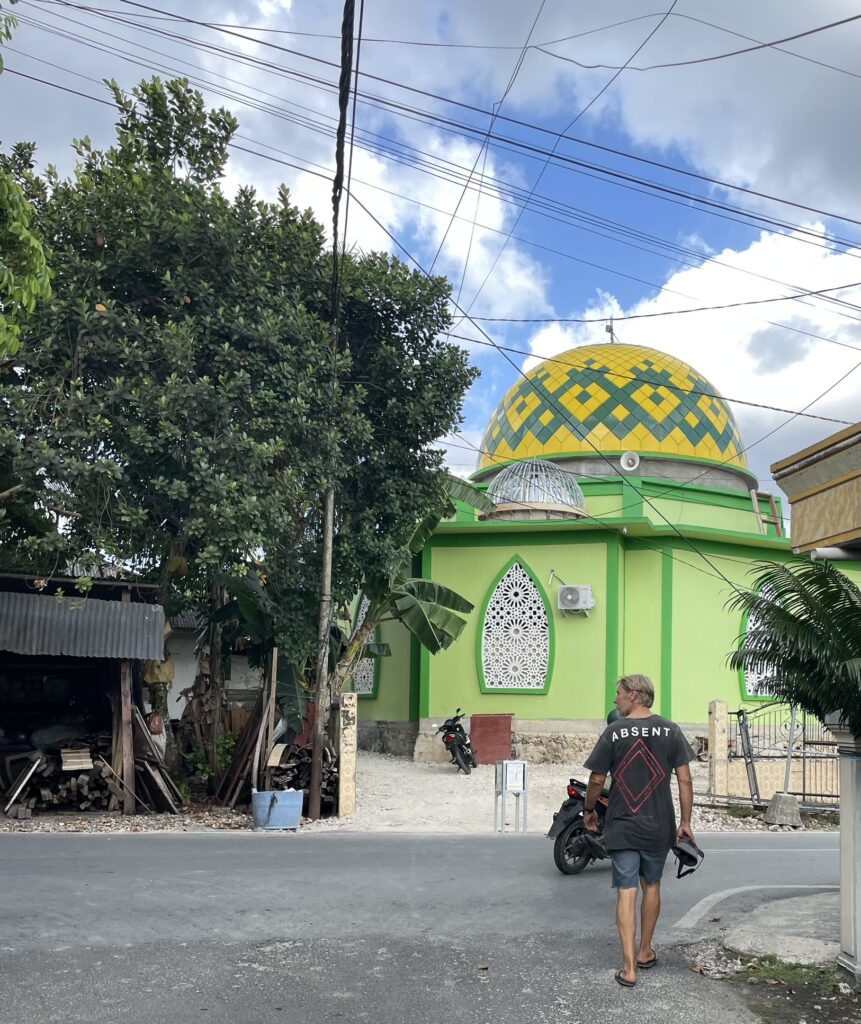

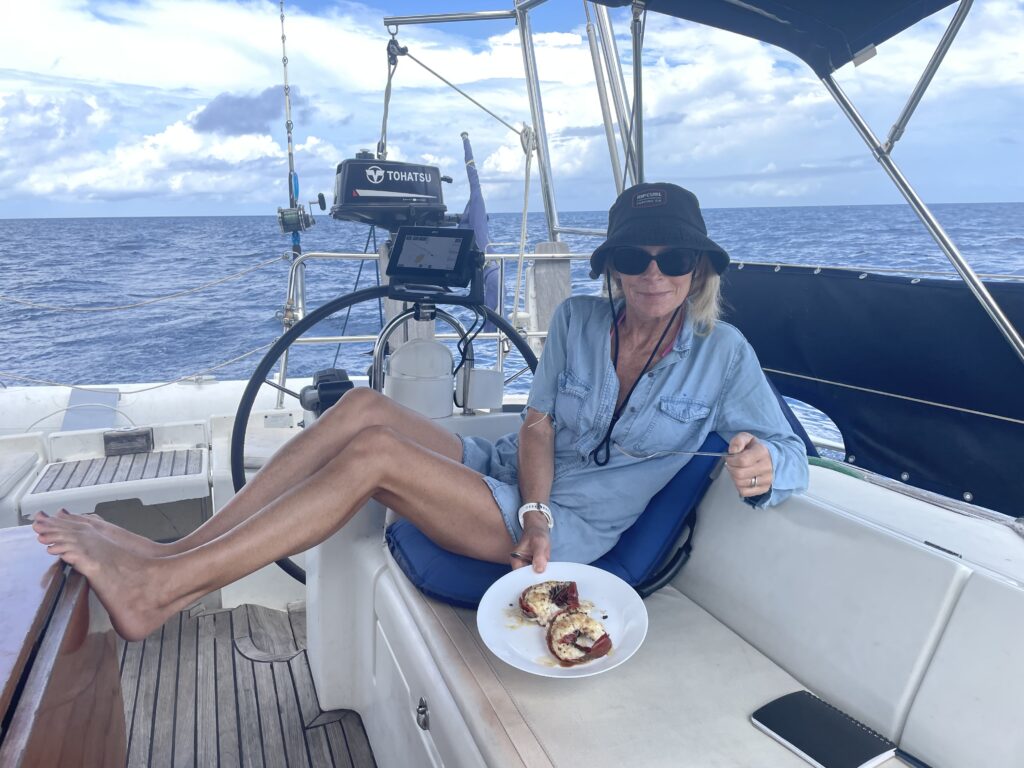

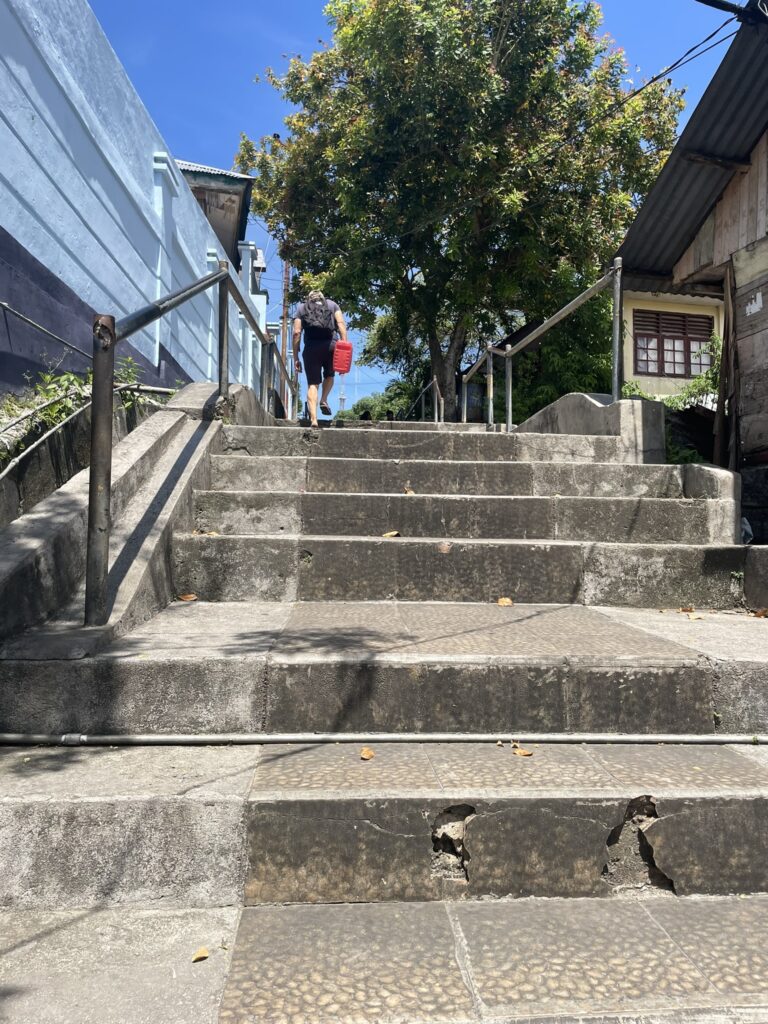
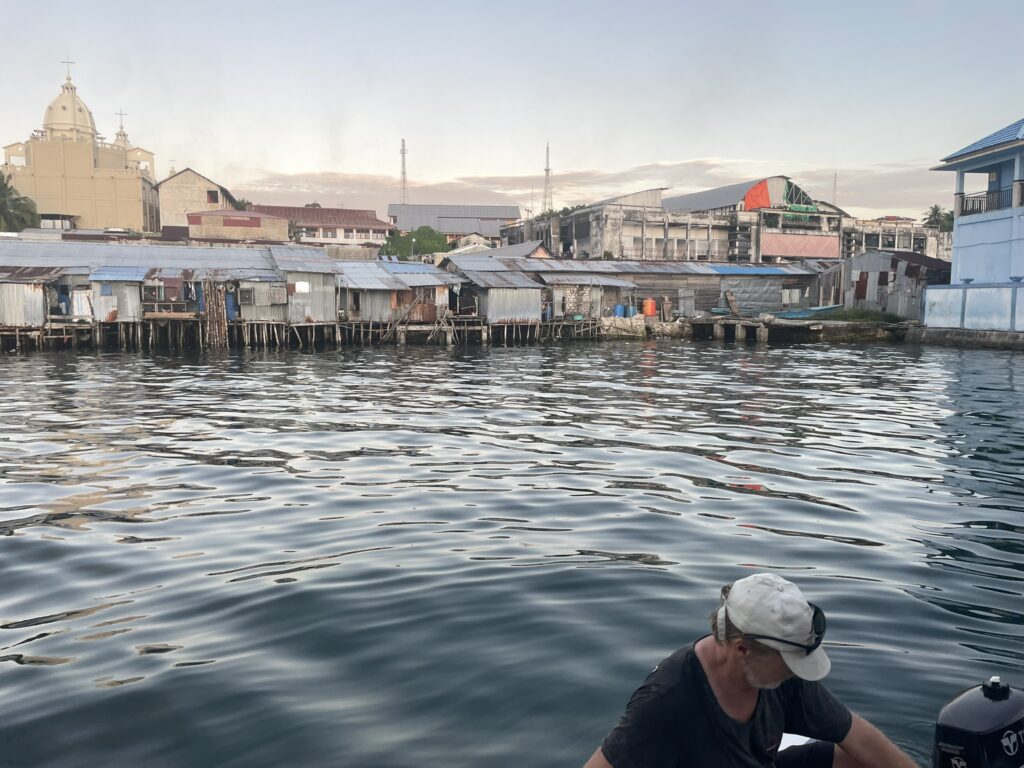
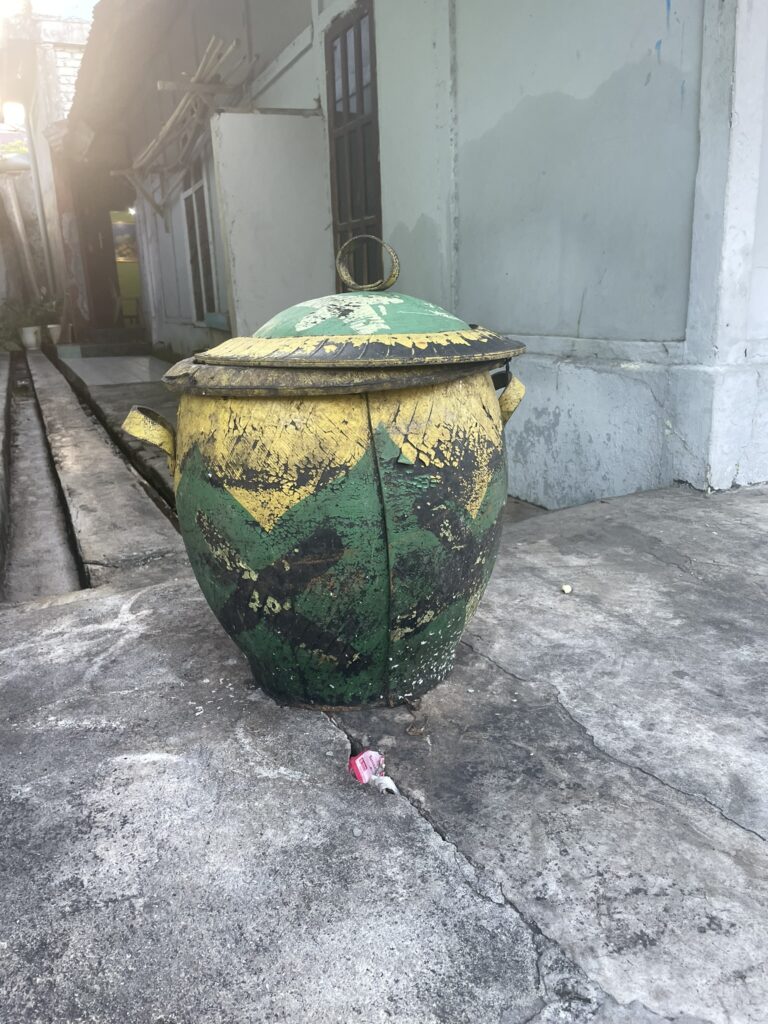

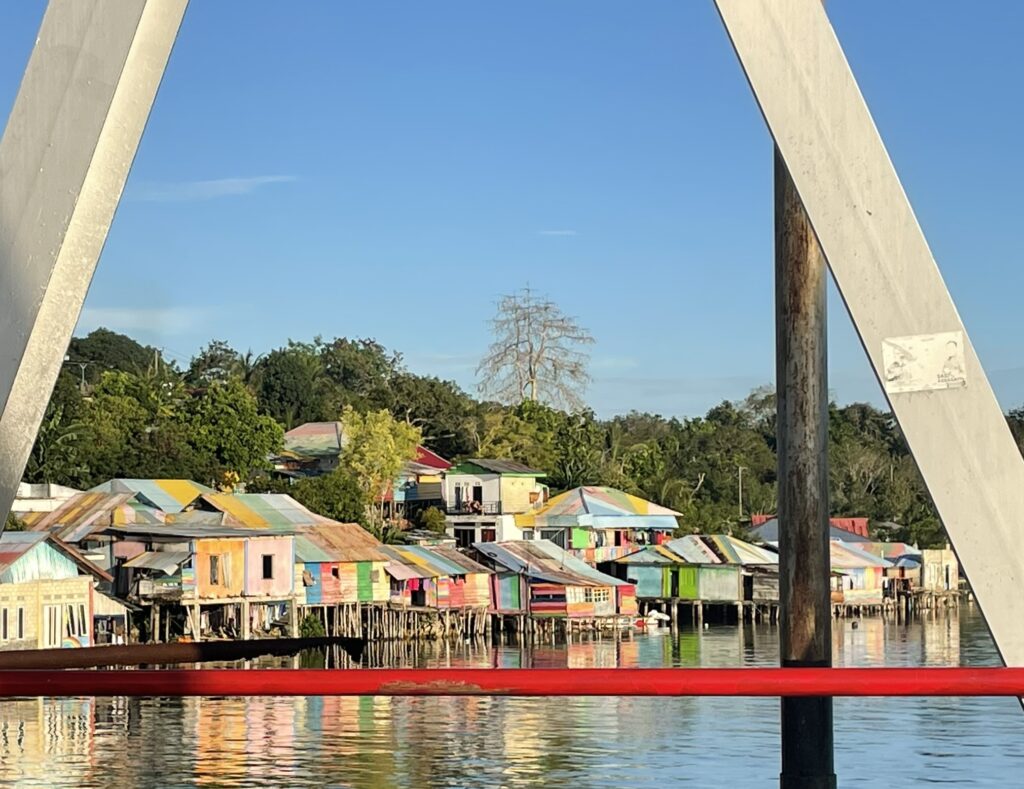
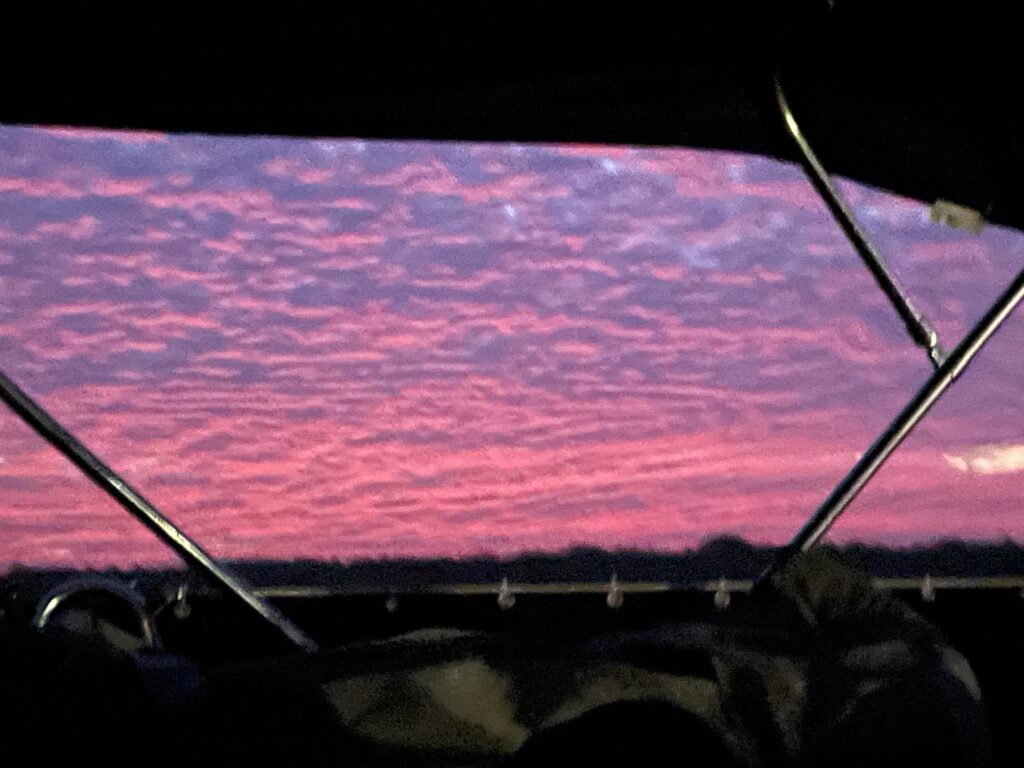

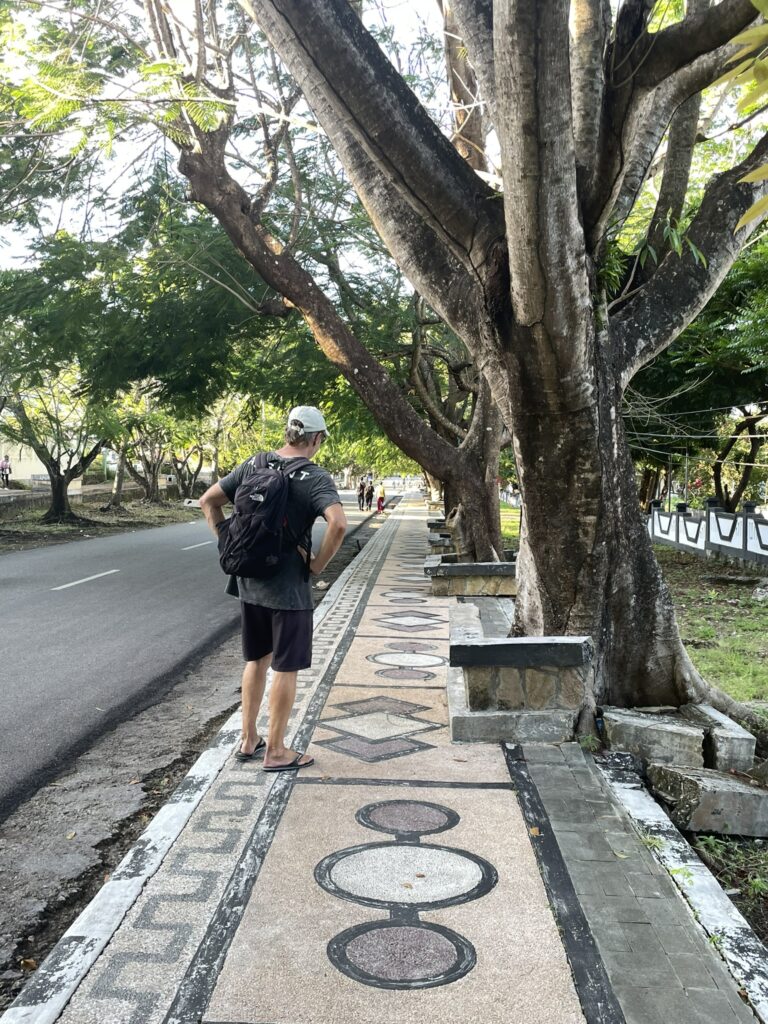
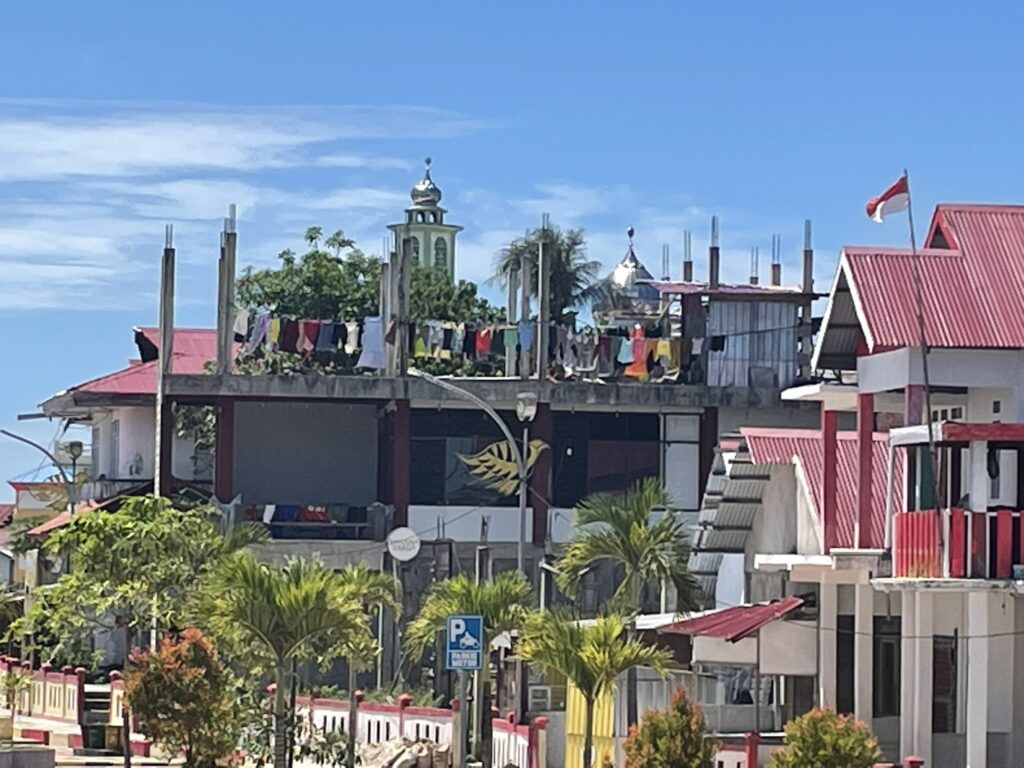
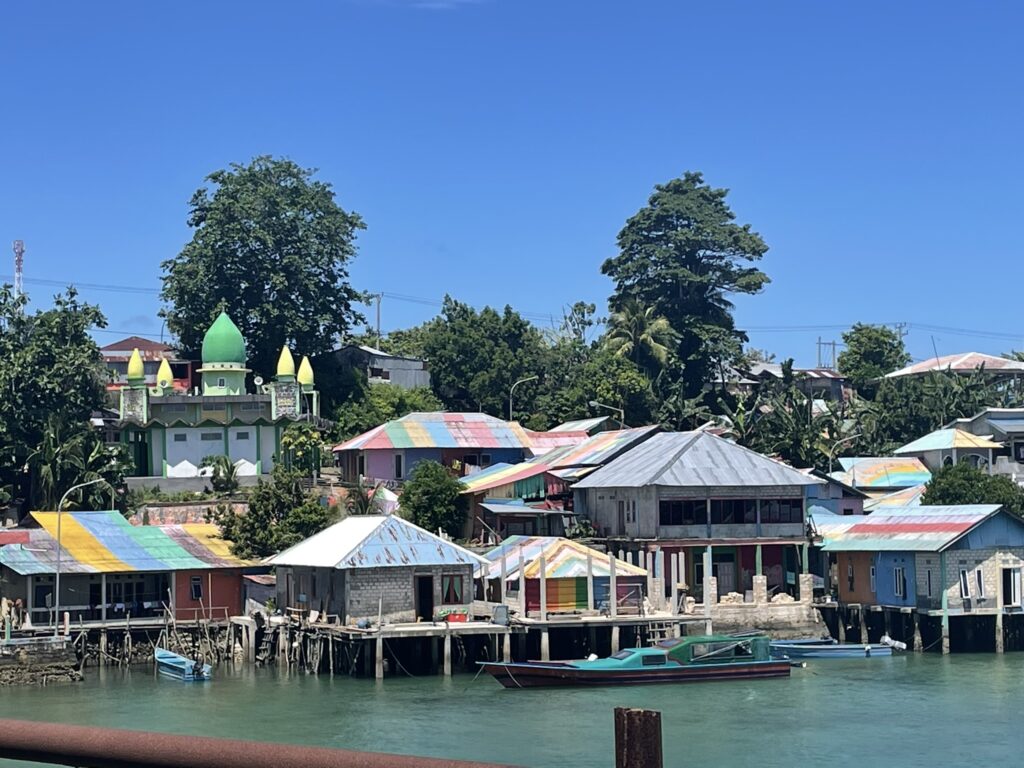
THE BOAT BIT
The sailing in Indonesia has been dominated by dodging fishing nets and FADs, and our usual tempo altered to accommodate only daytime sailing. It was actually quite pleasant to finish the day in time to watch the sunset and cook dinner on a relatively still boat. When anchored at night, the empty horizon soon filled with the lights of many fishing boats, resembling a small pop up city. Very disorienting at times!
Reefs are also a constant, and while protective in some anchorages; necessitating careful navigation much of the time.
There is minimal wind on the northern side of the main island chain at this time of year, but the current and winds that rush between the islands need to be planned for and avoided as much as possible. Around the Komodo Island area, the currents between islands almost stopped us on some occasions.
Our most interesting mooring was at Banda Neira, where the volcanic island drops away very steeply, meaning anchoring is tricky, and med mooring even more so. We had to attempt to med moor while dropping the anchor into 30 meters, trying to keep the boat straight as we backed up to the terrace of a hotel where we were to tie up. Absolutely no room for error here, and needless to say, fishing boats everywhere. We had a couple of attempts at this, and the rudder must have come unnervingly close to the steep bottom before we got secured. Precision work by the captain, and some welcome assistance from shore with our lines from a man who was to be important to us for supplies and informal tours.
Wakatobi was far more welcoming! We found a newly built but abandoned marina just waiting for us to tie up to. Gymnastics were required to bypass the locked gate to actually get on land, and often we took the dinghy round to the fishing jetty instead. There we could clamber to land over other boats, and local kids played in and over the dinghy just like they did on the fishing boats tied there; some also being homes to fishermen and families.
NEW EXPERIENCES:
- A LARGE sea snake lounging on the edge of our transom. His lazy morning sunbathing gave Magnus quite a surprise as he stepped outside to greet the morning, and he took a minute to compose himself before venturing “Rebecca, ……. you must come up…..!” The master of understatement. My visceral response was rather less understated.
- Weaving our way through thousands of fish attracting devices; “FADS.” Everywhere, and vitally important to Indonesian life, they are commonly tiny bamboo rafts about the size of a lilo. (luftmadrass) FADS are examples of sustainable fishing practices common in Indonesia, acting as artificial habitats that attract fish, simplifying the fishing process. Fishing feeds families, and often provides an income. Despite their central role in fishing life, the FADS are impossible to see in even the tiniest of waves. We only noticed the first one because a bird happened to be sitting on it. This resulted in the captain throwing the wheel hard to starboard to make a (very) quick jibe. Missed it, but not by much.
Soon after, we were carefully avoiding a black marker indicating the end of a fishing net, while unknowingly running over another fad. We knew something was wrong because the boat slowed to a halt. Okay…..time to drop the sails and try to figure out what to do. Starting the engine is obviously not option with masses of polypropylene rope underneath the boat. While we were deciding what to do, we saw the little fad bob up from under the back of the boat. The net must’ve found its way off the keel, and thankfully didn’t find the rudder on its way out. From this moment on it was all (4!) eyes on deck, as we perched on either side of the boat, eyes like hawks, trying to spot anything in front of us. Even with such careful observation, we passed many fads and only noticed them when they were beside the boat. Whenever we spotted actual fishing boats nearby, we steered toward them before passing behind, having learned that their nets extend from the bow rather than the stern, meaning that the boats were downwind of the net, rather than the other way around, as we had incorrectly deduced. When we got within shouting/waving distance; we began a friendly charade, gesturing the question “Where is your net? Which was confused with, “Where should we go to avoid your net?” Amid much smiling and arm waving, I also watched the fisherman’s reaction to our change of course. It was easy to see if we had got it wrong (frenzied gesticulation from the fishermen in our direction) – and so we altered course accordingly, no harm done. This period of sailing was intense to say the least. Not the weather or the sea, but the visual vigilance. It is incredible how difficult it is to see small things in the water.
- Going for a run in flowing palazzo pants and long sleeved linen shirt. My erstwhile elegant pants wrapped sweatily around my dripping calves, and linen shirt sleeves were employed as sweat bands to mop my effusive forehead! Menopausally speaking; very hot and flappy – but socially/culturally acceptable in the Muslim culture that we were living within on many islands.
- Being in a “cafe” that may in fact have been someone’s lounge room. This happened when we anchored outside one of the major towns in Flores. (According to the map, anyway.) On inspection however, it turned out to be a TINY village. Google maps suggested we might find two cafes and two shops. This seemed to be a bit of a stretch when on the ground, but undeterred, we went for a bit of a walk around the dusty streets and unintentionally gathered a large entourage of children along the way. Among their merry chatter, and after a chat with a visiting (madrasa?) student near the mosque, we found a little shop that sold the usual plastic wrapped lollies, eggs, bags of flour and 2 minute noodles. The suggested cafes were less obvious. One was a small boarded up room, the second looked equally unlikely, but as we broached the dark doorway blinking from the bright sunlight outside, we were greeted warmly by a woman who appeared as surprised to see us as we were to discover that she may in fact serve us food. After we had established this, through gesture and good will, she asked us what we wanted to eat. This was a difficult question because we had no idea of the possibilities. (TBH – they looked pretty slim) So we went with the safe option – the ubiquitous mi goreng. Although grateful, we had to stifle giggles as she took a packet of two minute noodles off the shelf and went to the kitchen to prepare them for us.
- Doing “shark watch” after we caught a large Spanish Mackerel just after leaving Thursday Island. It was a VERY ATTENTIVE shark watch as Magnus stood on the transom gutting our catch. He wisely decided NOT to throw the bloody entrails into the water until he had finished and was out of harm’s way. We were suitably cautious after our recent inadvertent shark feeding session while trying to catch fish from a dinghy. Would I have spotted a shark early enough for an effective warning? I doubt it, but if felt better to try.
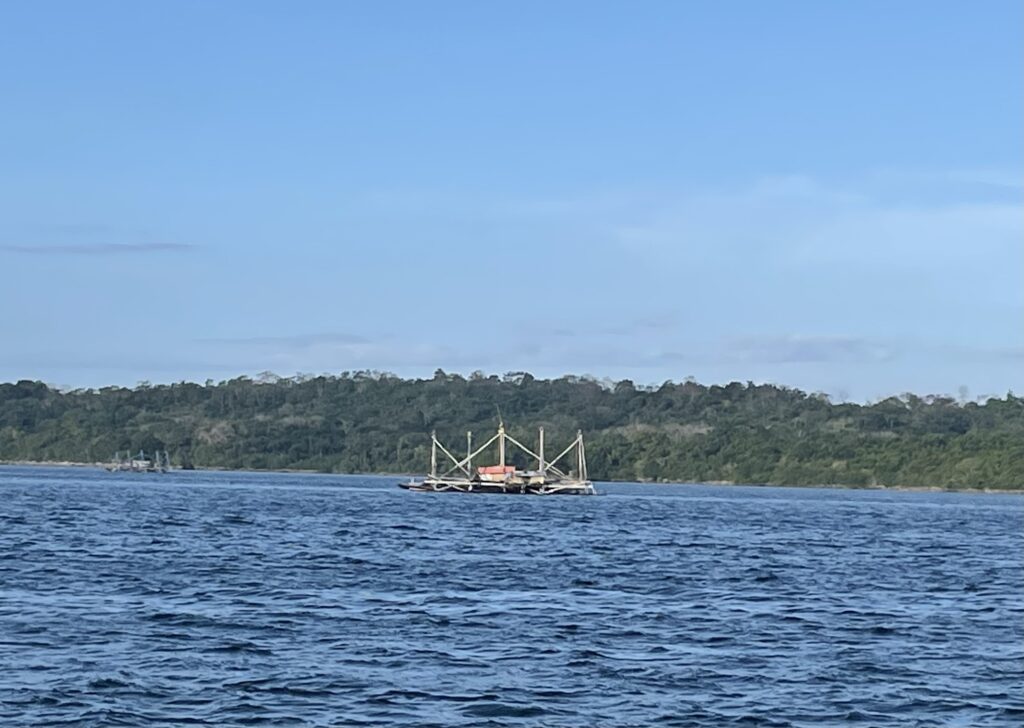
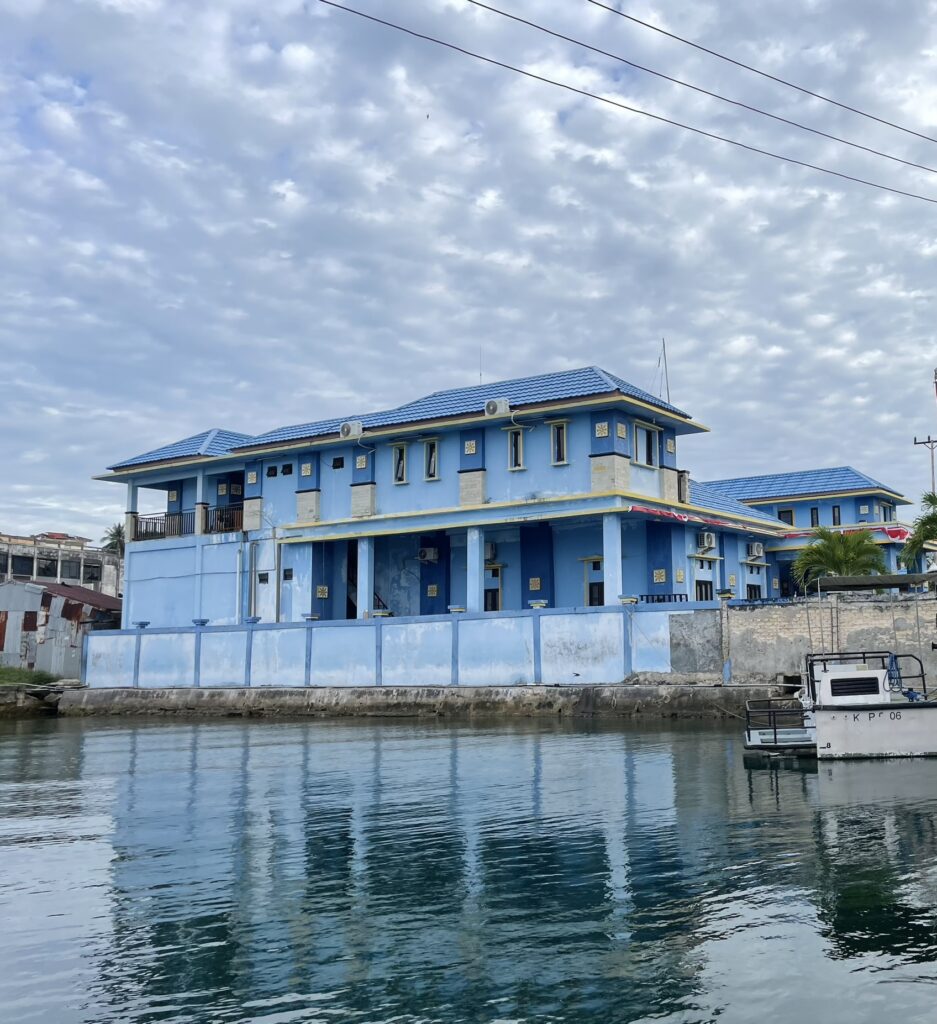

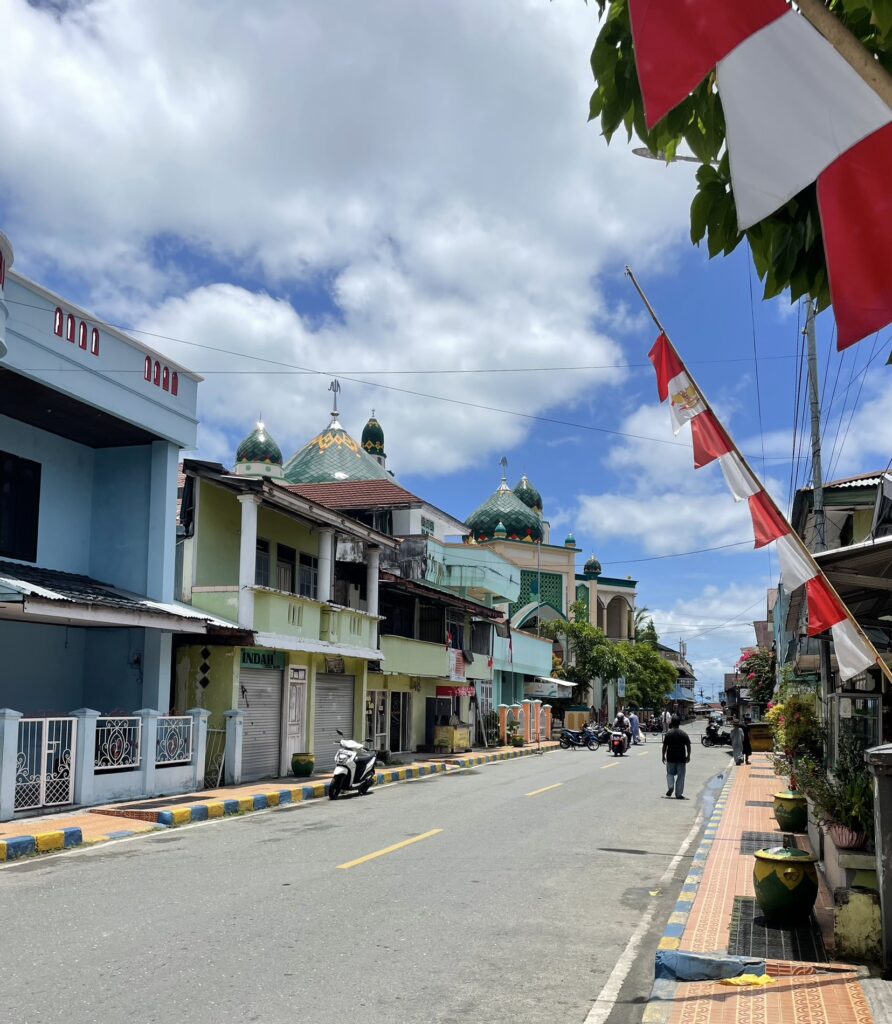
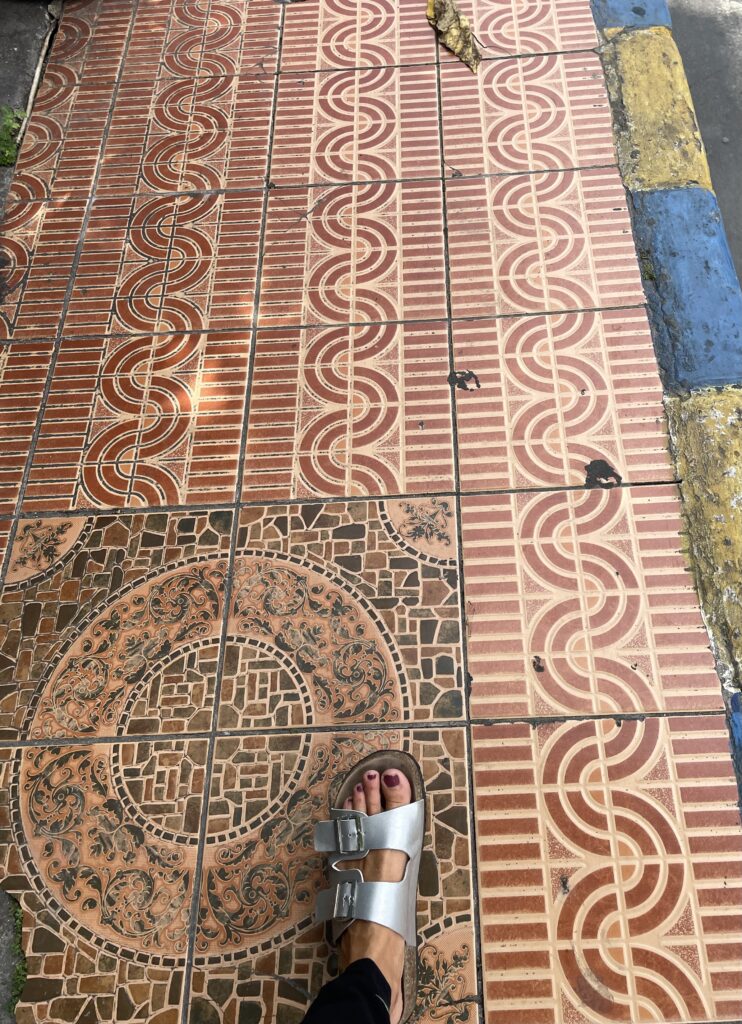
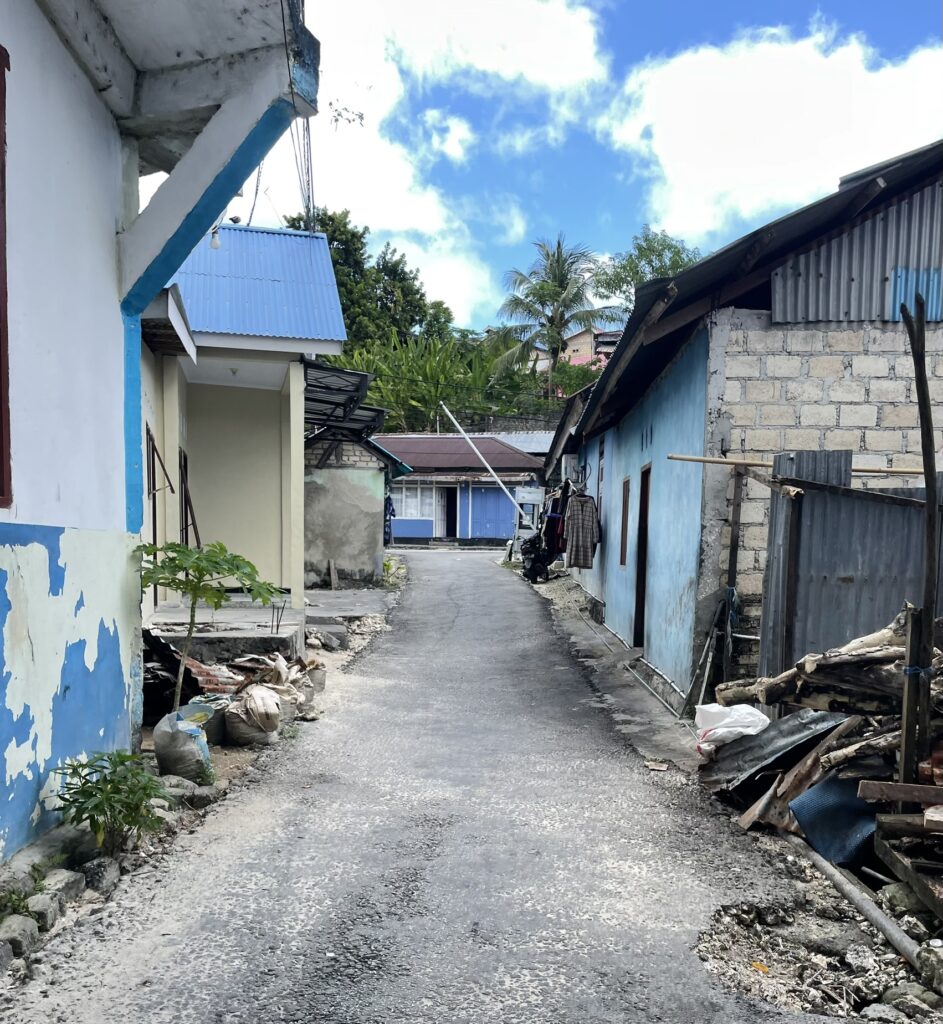
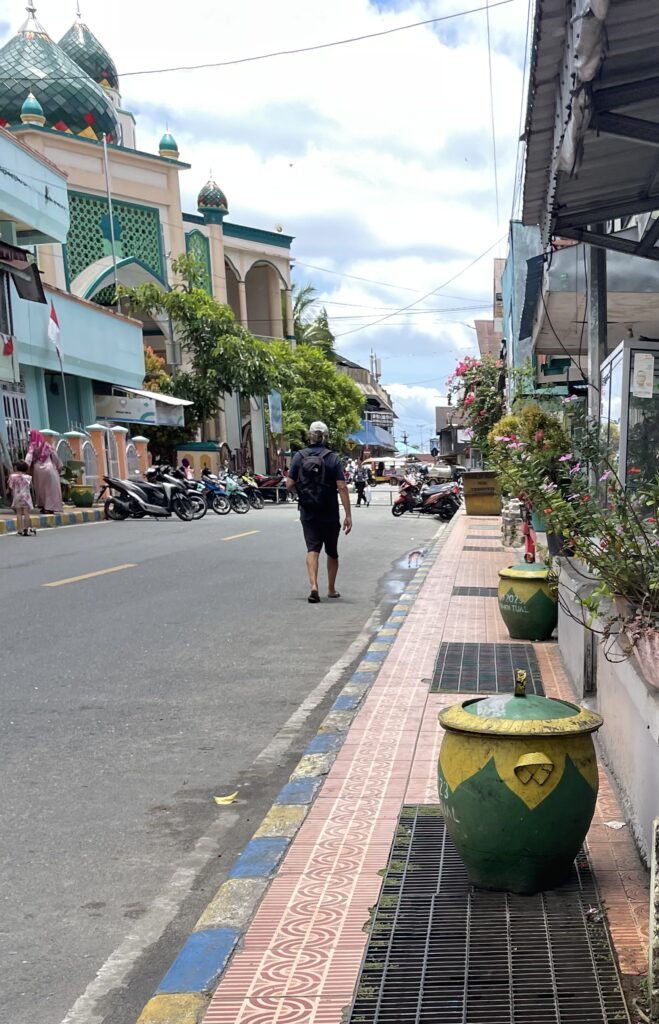




BEST:
- Attending a Muslim wedding, (Nikah) on the invitation of a family we befriended in Banda Neira. The invitation was unexpected, as was being seated as guests of honour in the front row, having never met the bride or groom. Despite our discomfort at our undeservedly elevated status, it was a beautiful occasion in a extravagantly decorated marquee on the outskirts of town, and a wonderful opportunity to learn a bit more about life in Indonesia.
- Learning about the spice trade in the Banda islands. Nutmeg is a spice native to the Banda Islands, and Indonesia was historically the world’s leading nutmeg producer and its cultivation has shaped the region’s trade history for centuries. Bloody battles were fought over the rare spice, which was at times more valuable than gold. Inspired. I used the nutmeg fruit to make jam, which was delicious and a little like ginger marmalade.
- Doing a cooking class with a local family, using just a single flame reminiscent of a bunsen burner, a small wok, and a mortar and pestle. Communication was aided by an English speaking niece who was staying with the family. We made a divine eggplant dish, a spicy tuna dish and my fave yellow rice. I’ve tried it since, but missed fresh tumeric to grate. The dried stuff did not cut it with yellow rice.
- Land touring through mountain villages in Flores to visit the incredible volcanic crater lakes in Kelimutu National Park. The park features tri-colored volcanic lakes that change color due to mineral reactions, a natural phenomenon tied to Indonesia’s geological richness. The three lakes are currently vivid shades of blue, turquoise, and black, but over time they have transformed from red to green, blue, white, and black.
- Snorkelling and scootering at Wangi Wangi, Wakatobi, South East Sulawesi. The Wakatobi National Park comprises four islands, and the snorkelling (and no doubt diving) is world class, as shelf reefs drop away to royal blue depths, colourful fish adorning the coral at every turn. Scootering along the coast revealed a series of white sandy beaches between lazy strung out townships which lined the bumpy main road. Many people were sitting and lying, resting and talking on raised platforms in front of houses by the side of the road. These structures were shaded by palm thatched roofs. It seemed likely that families may sleep there, but I did not confirm this.
- Komodo Dragons. These ancient beasts are impressive and efficient at catching prey by poisoning with a bite, and then following them for days, awaiting their slow demise. They can run, swim, and climb trees – so we were pretty wary on the beaches of Komodo and surrounding islands.
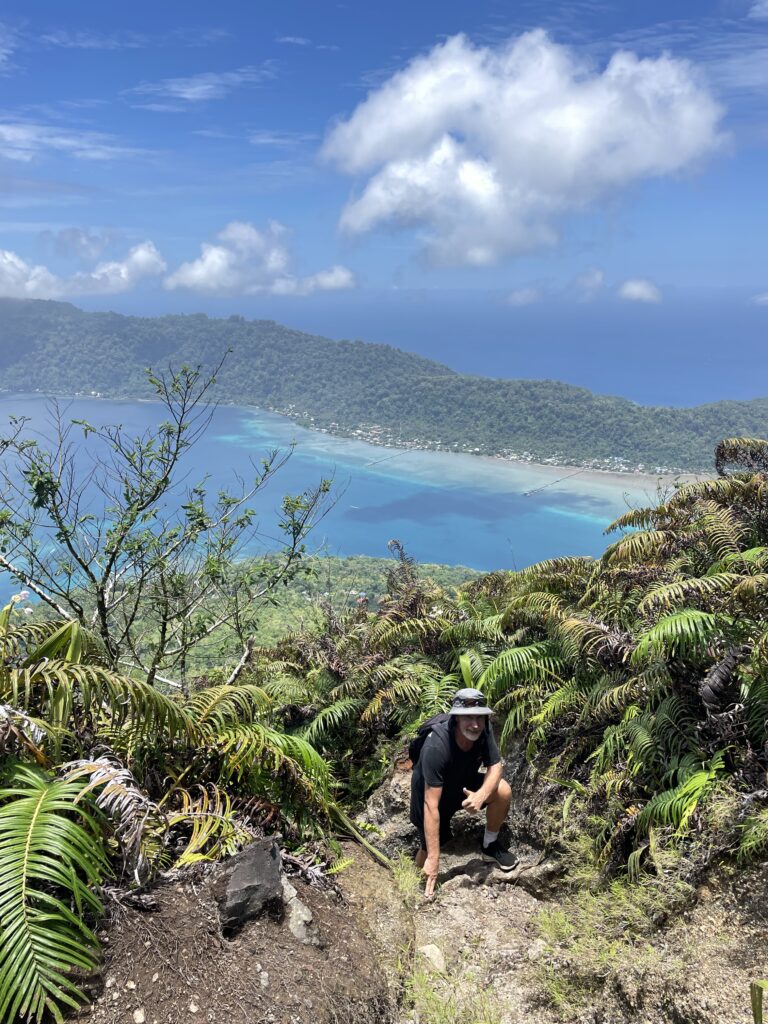
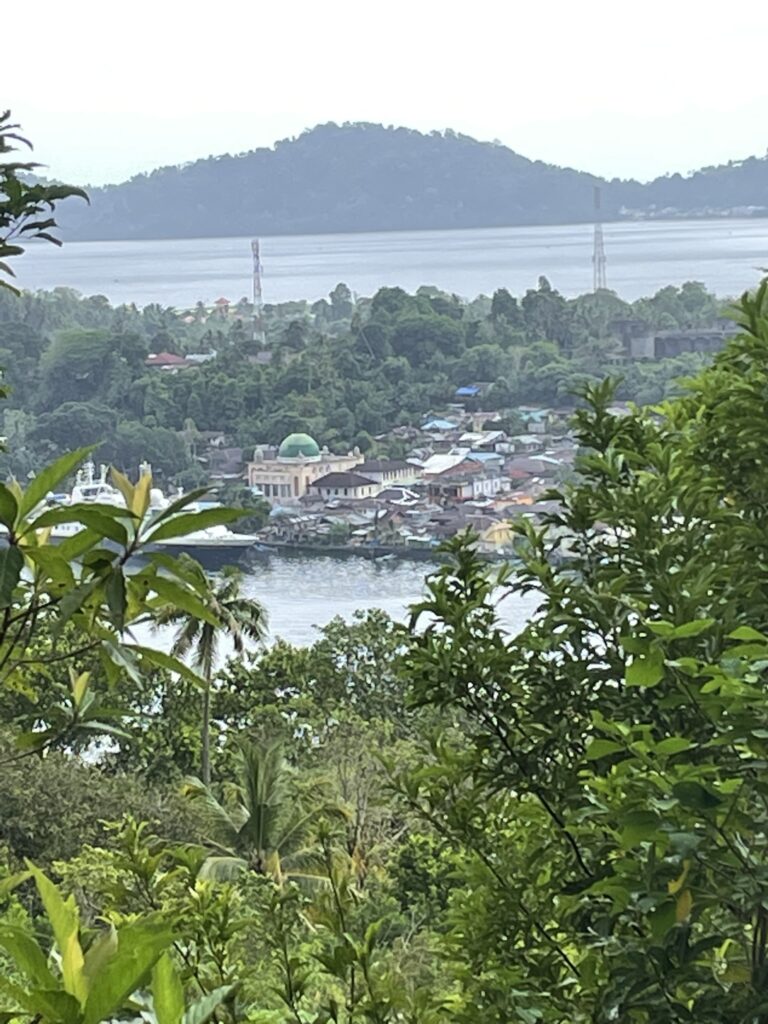

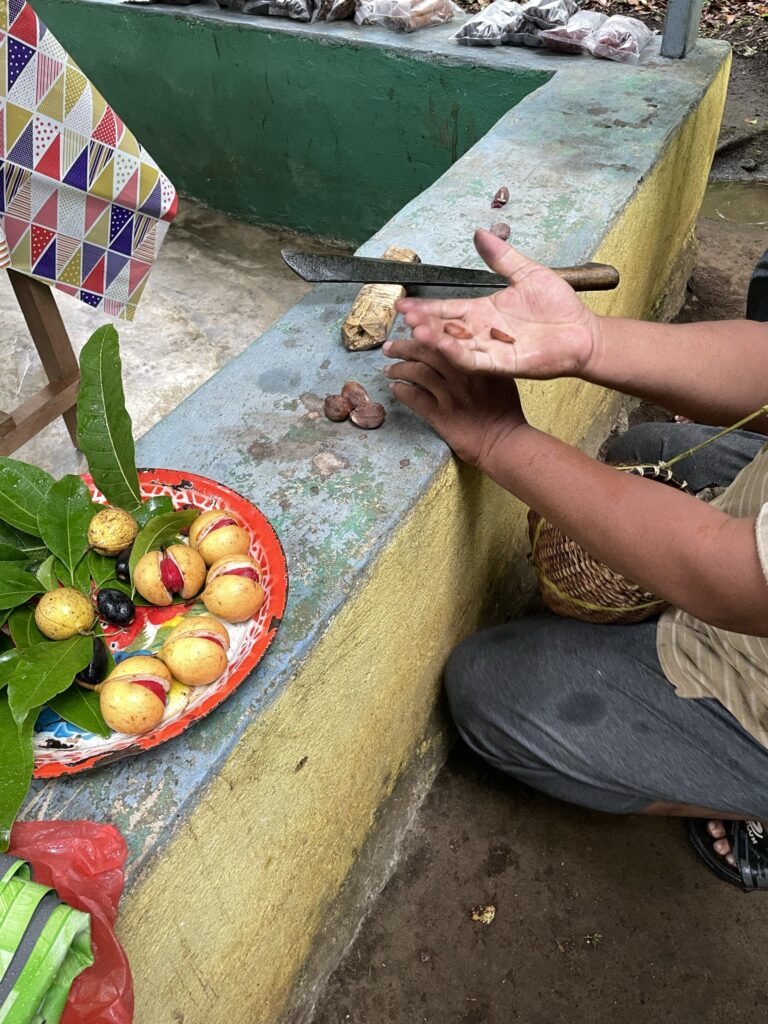
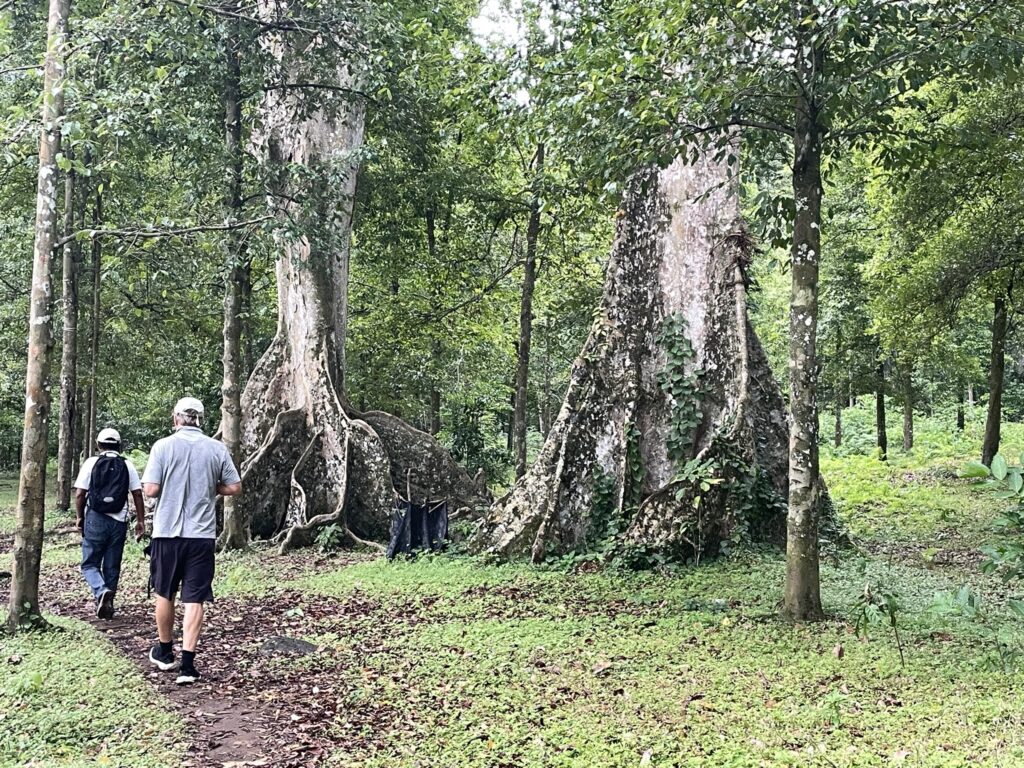


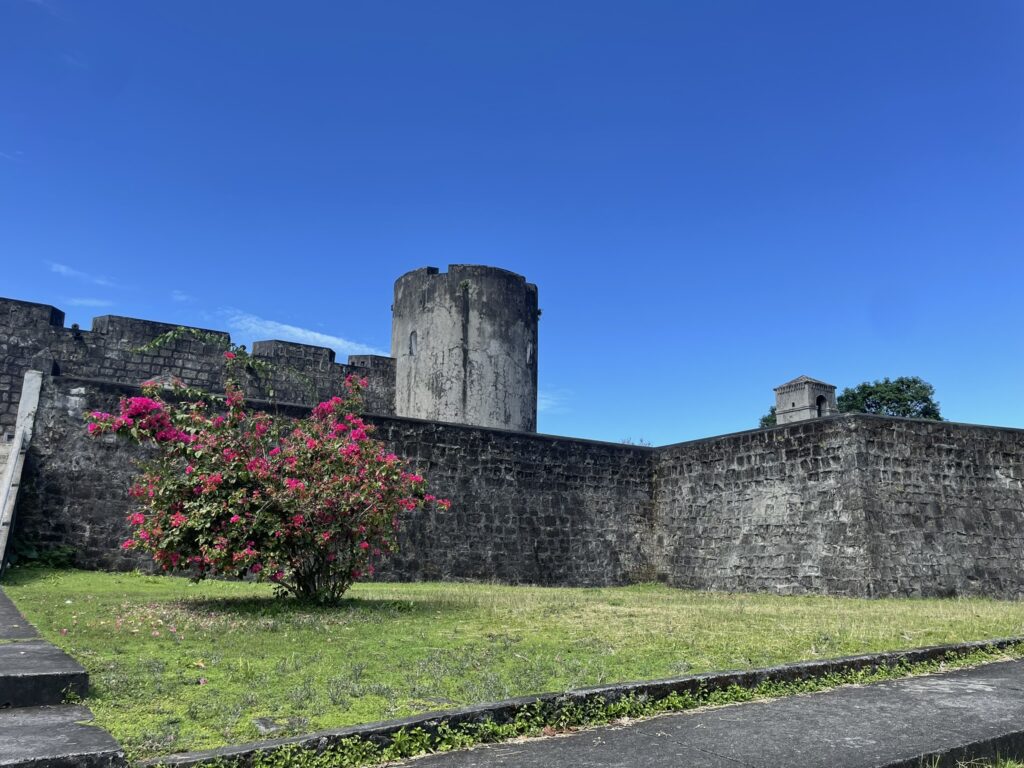
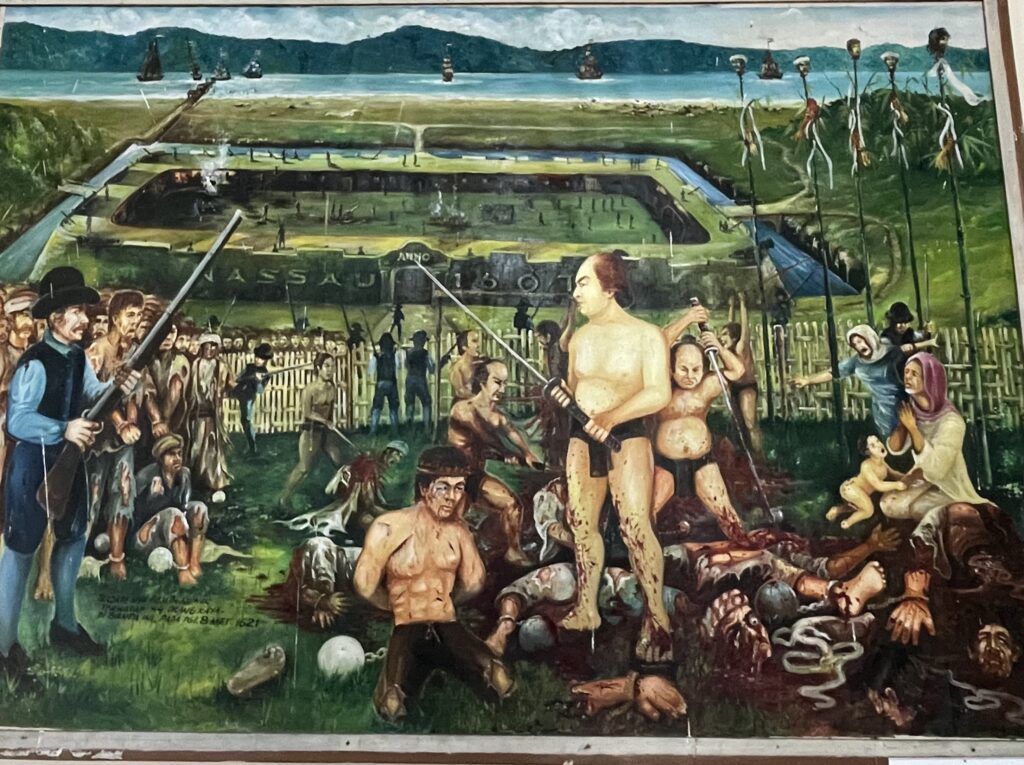
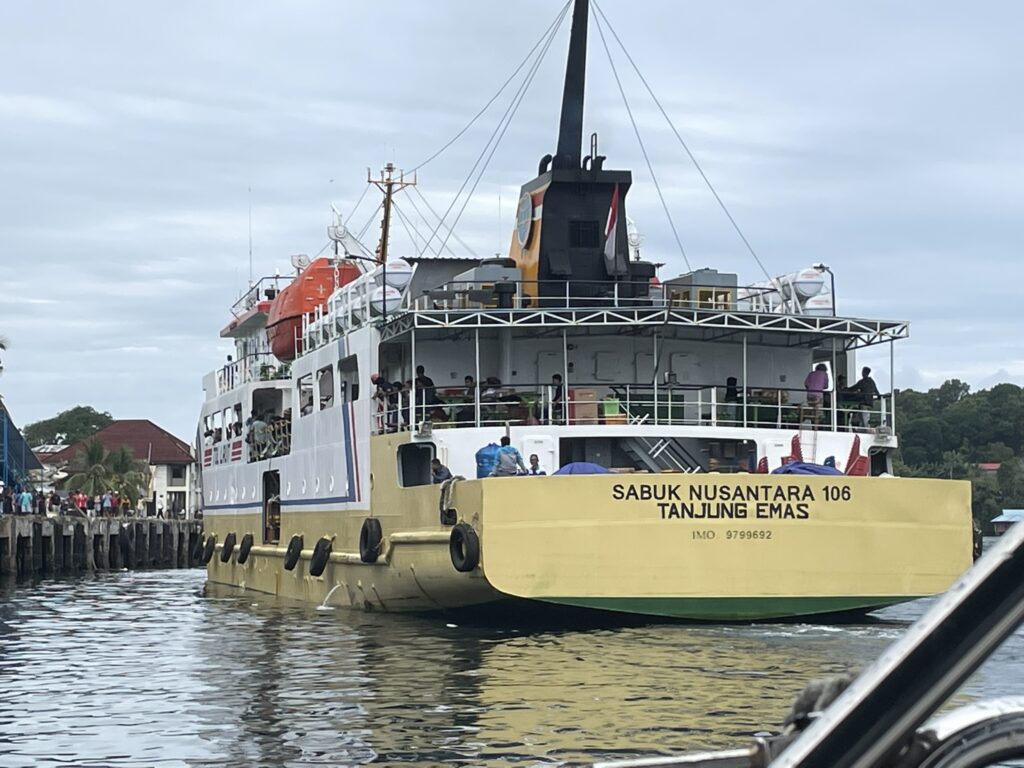
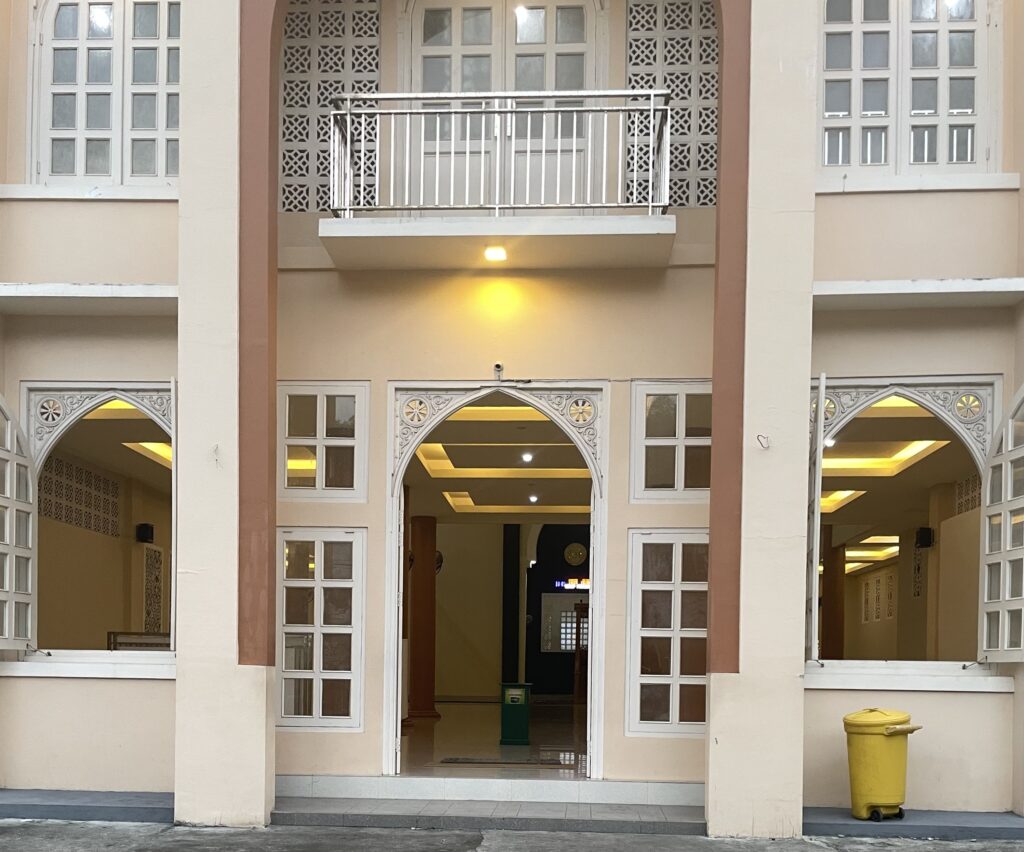
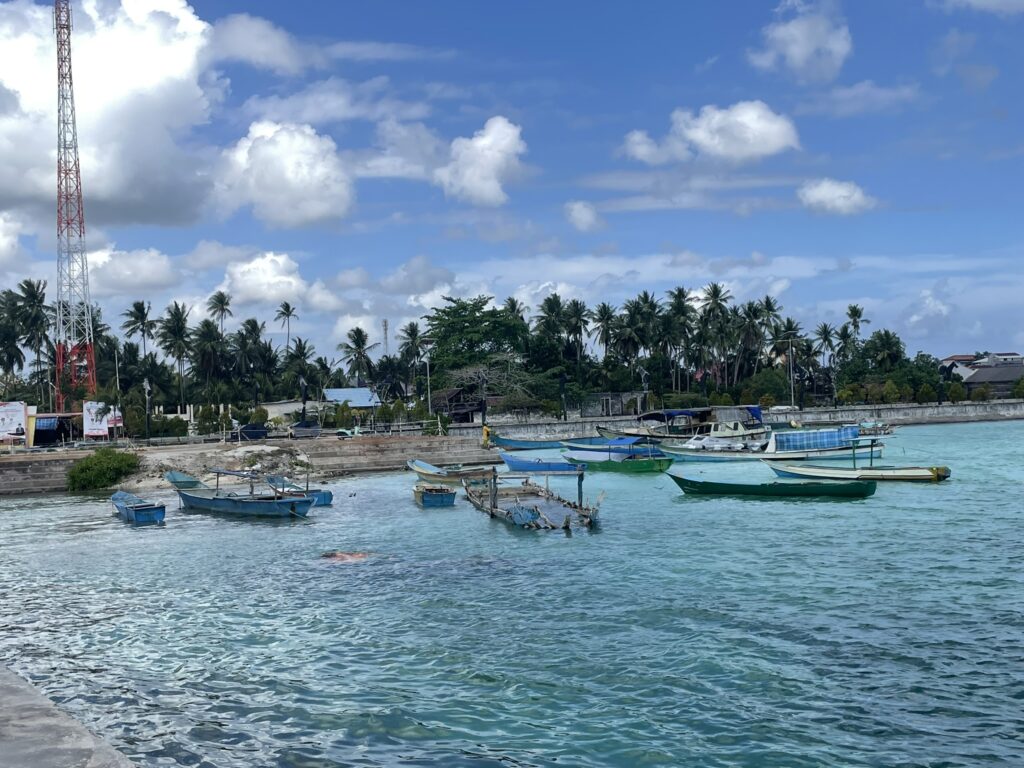
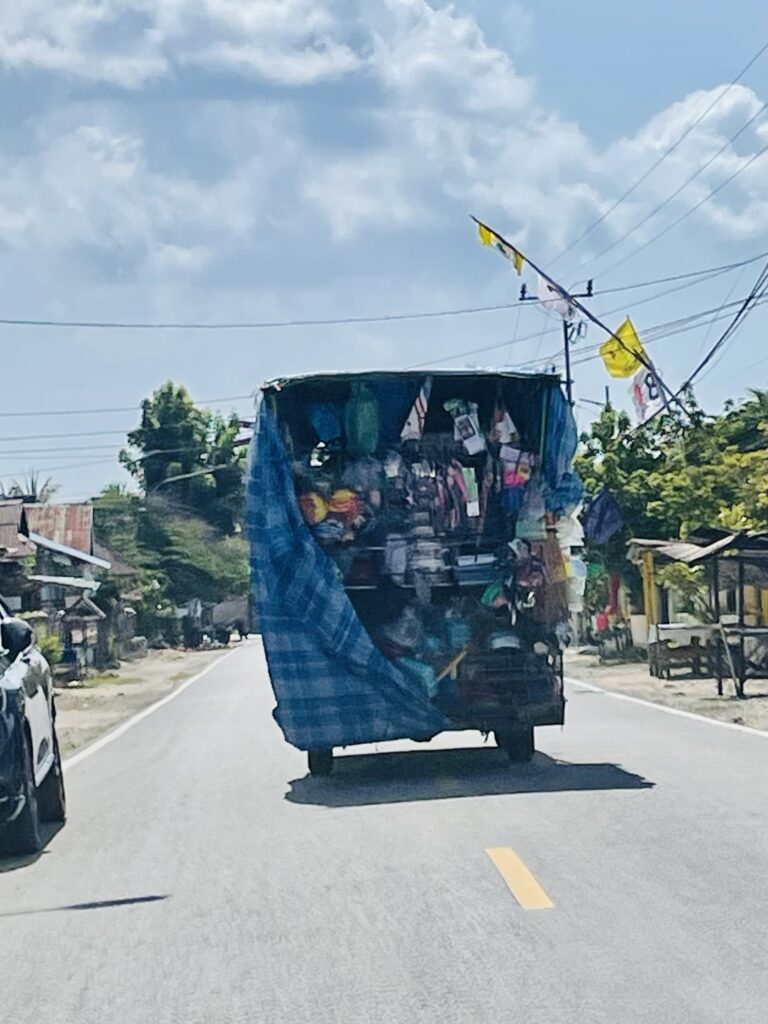
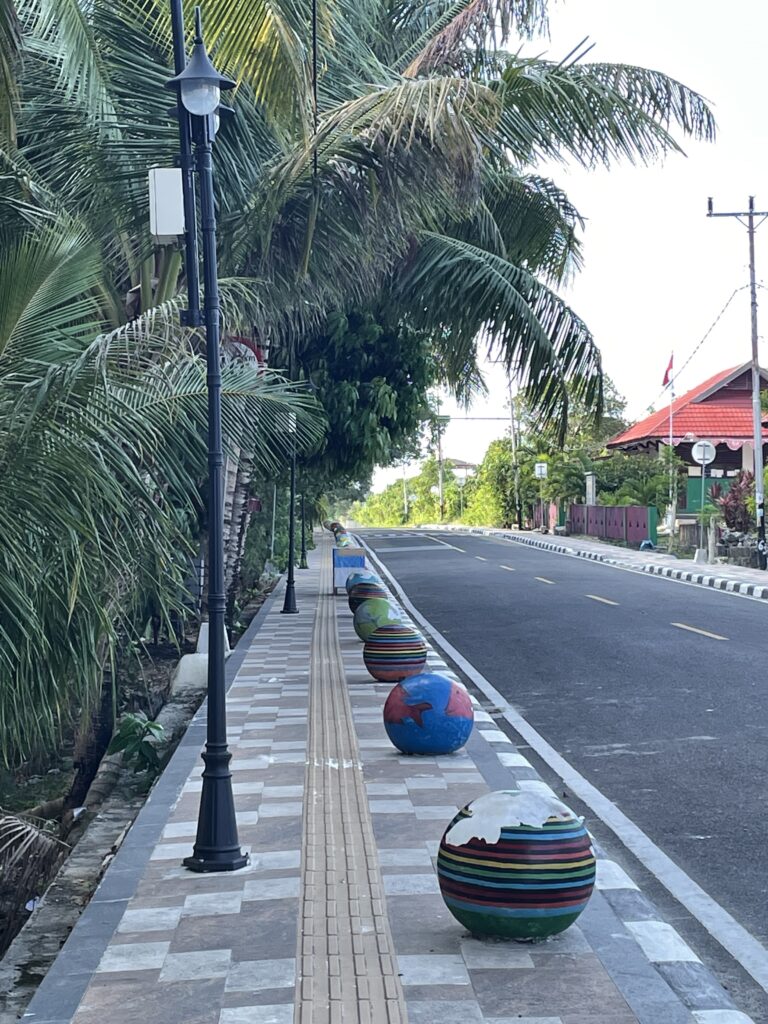
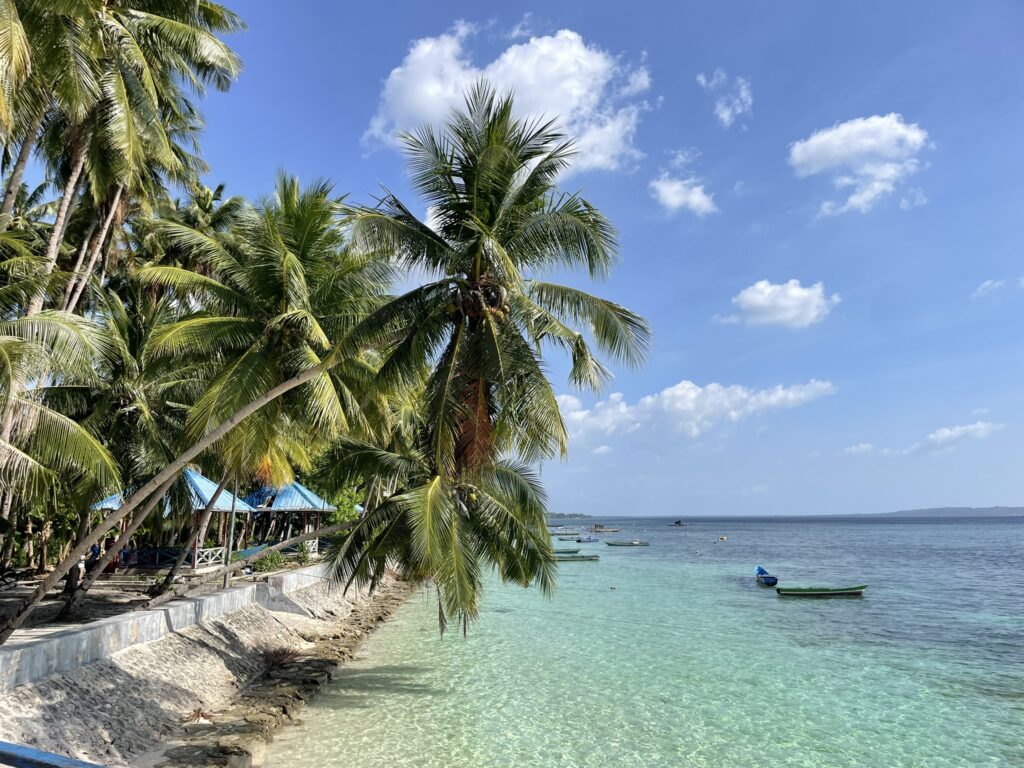


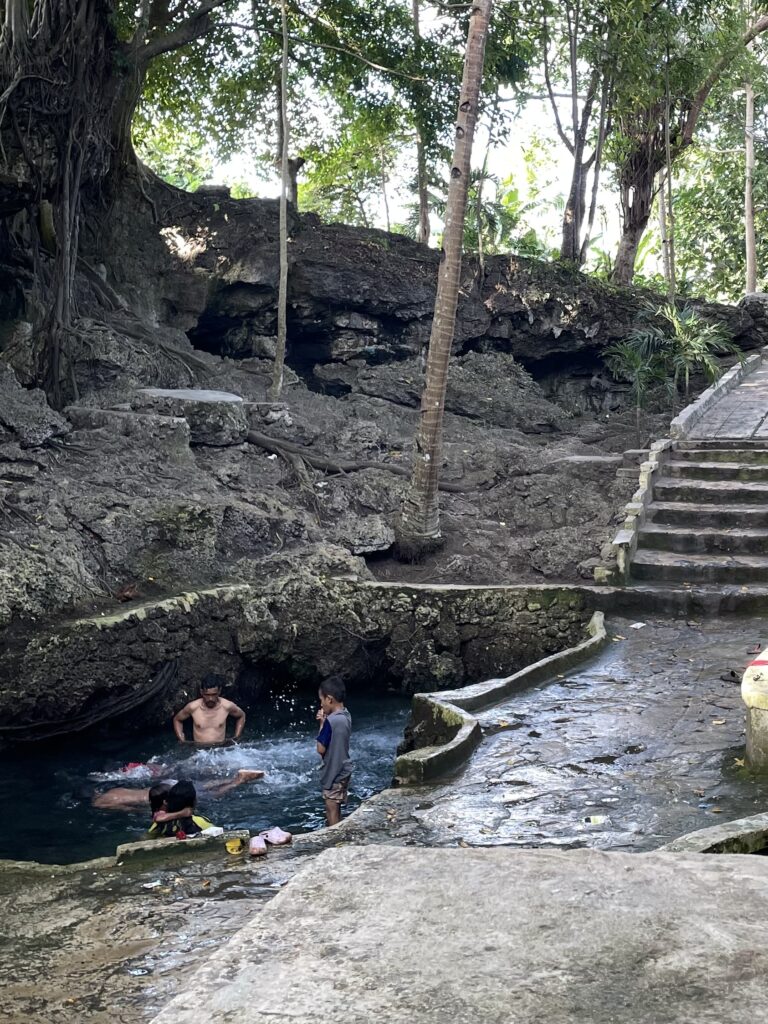
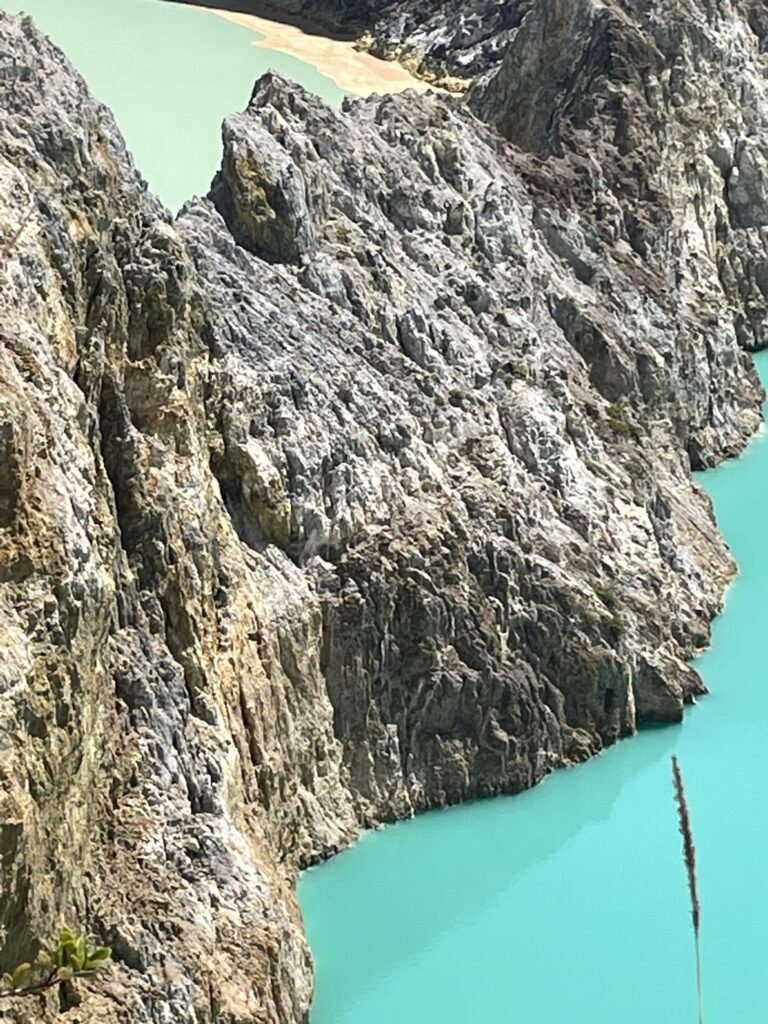

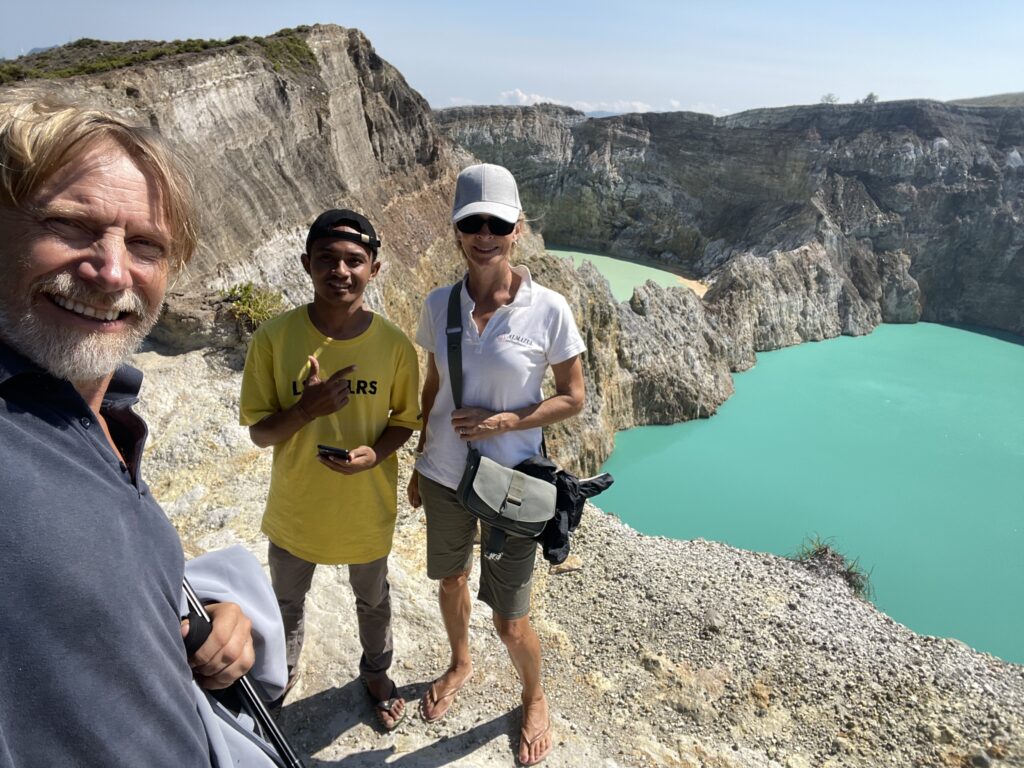
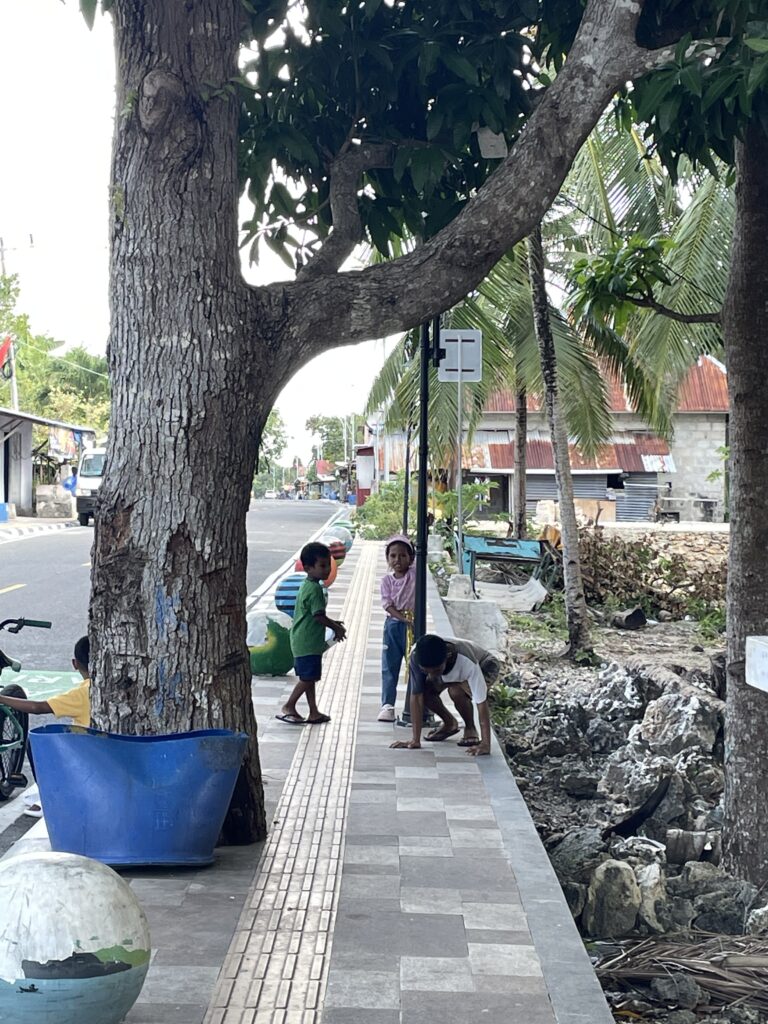
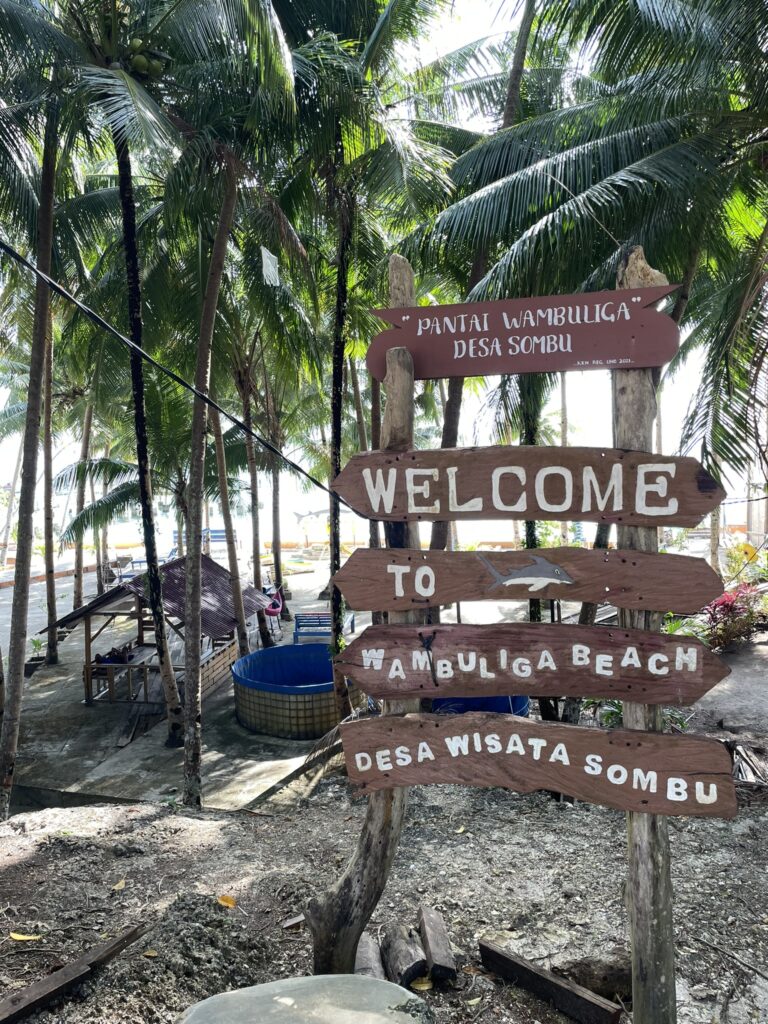
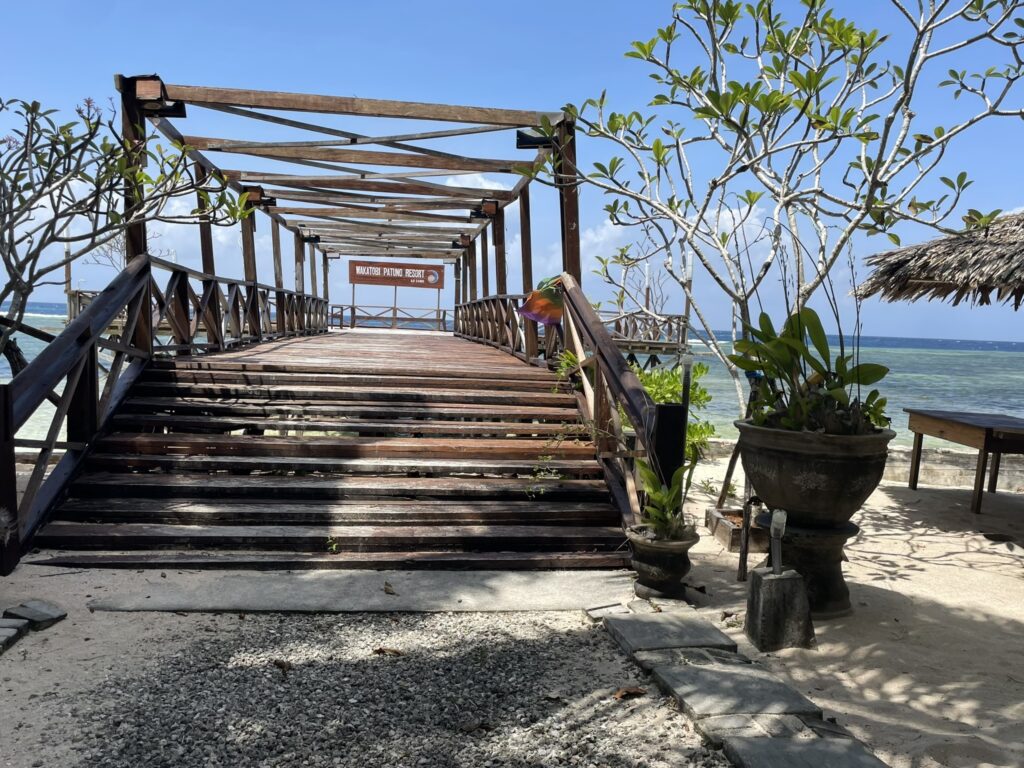
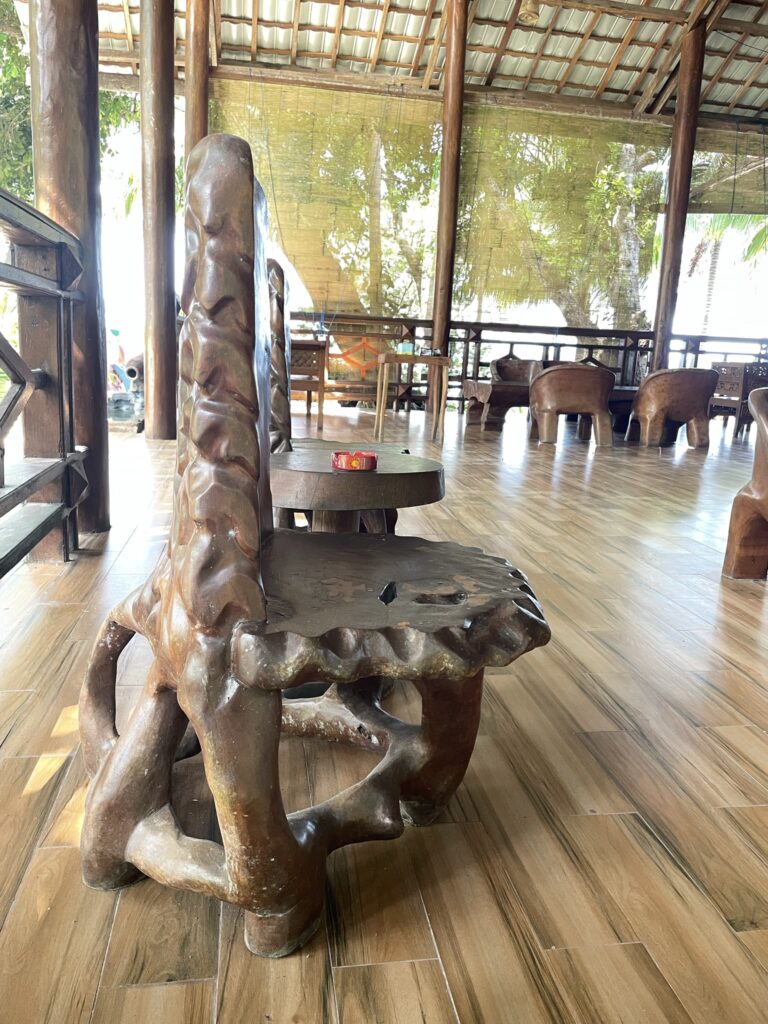


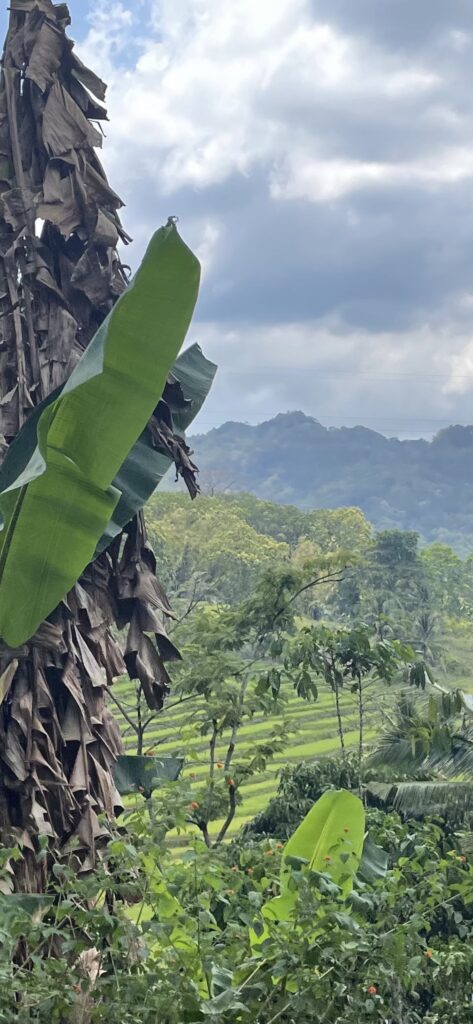


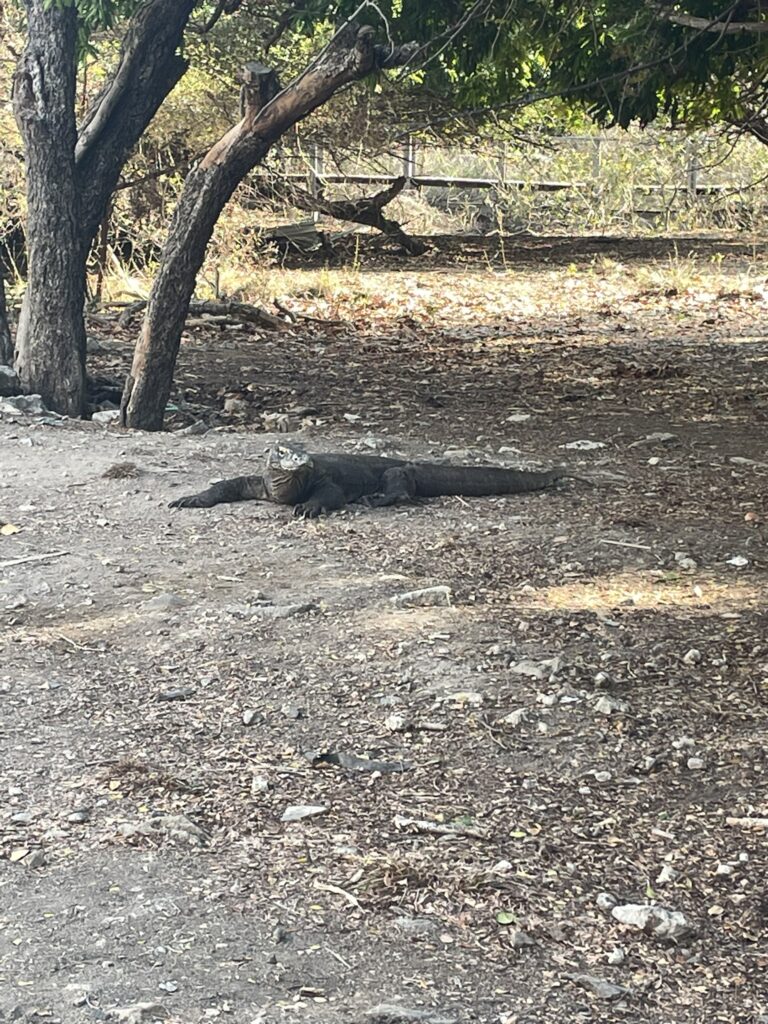

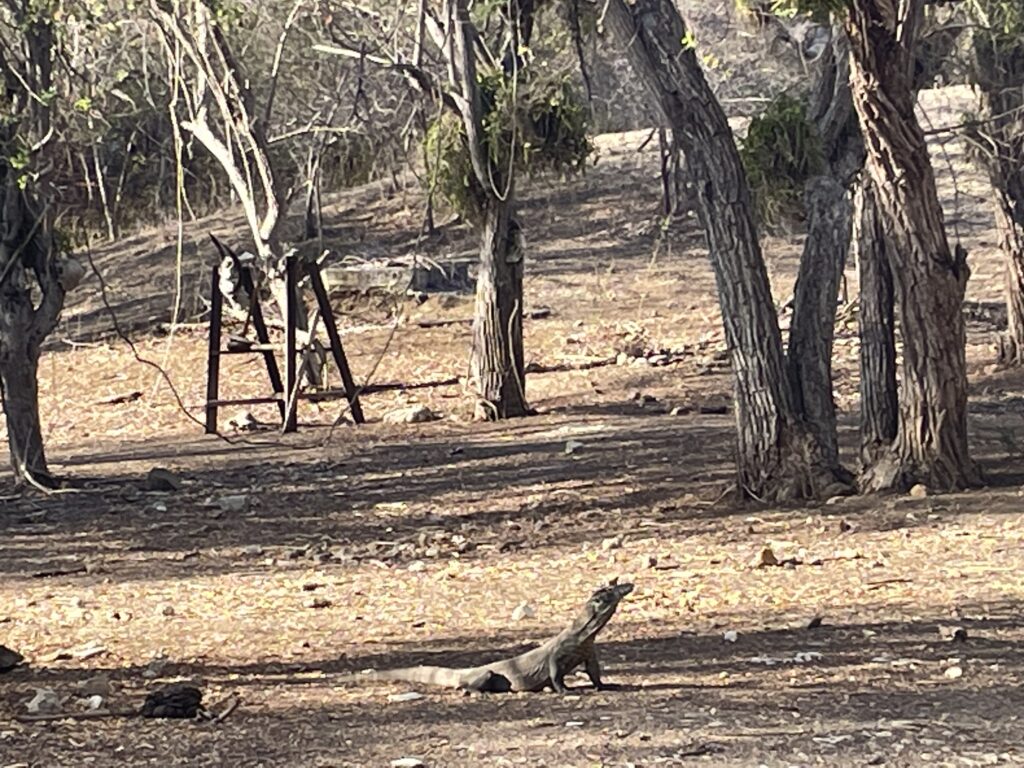


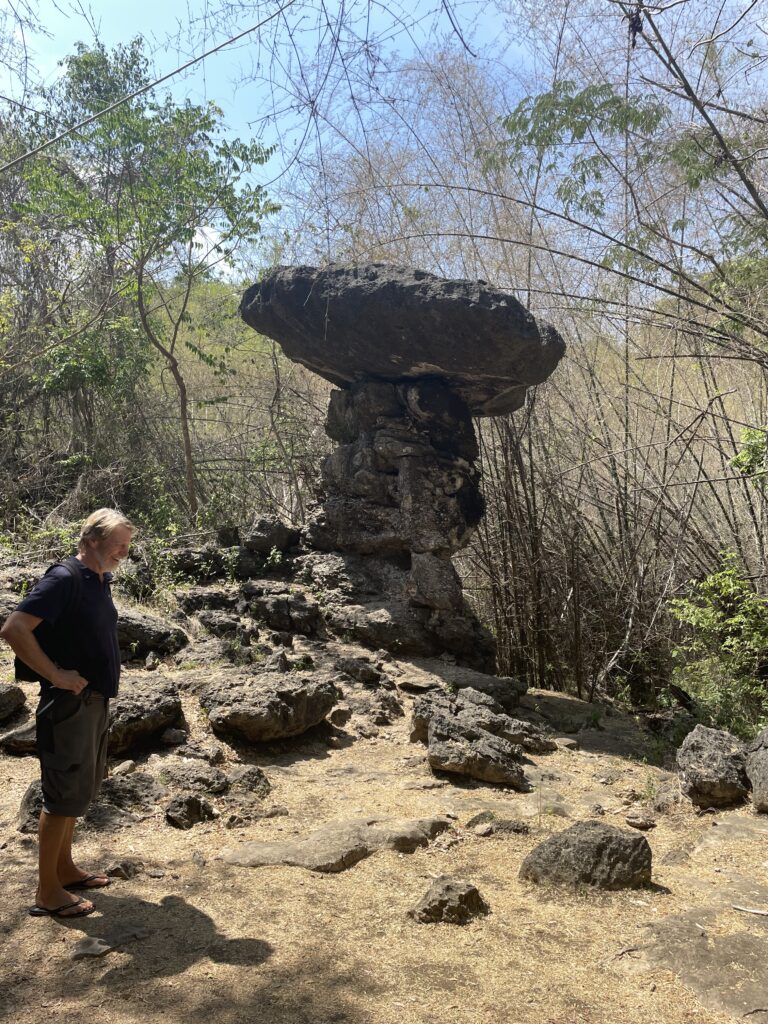
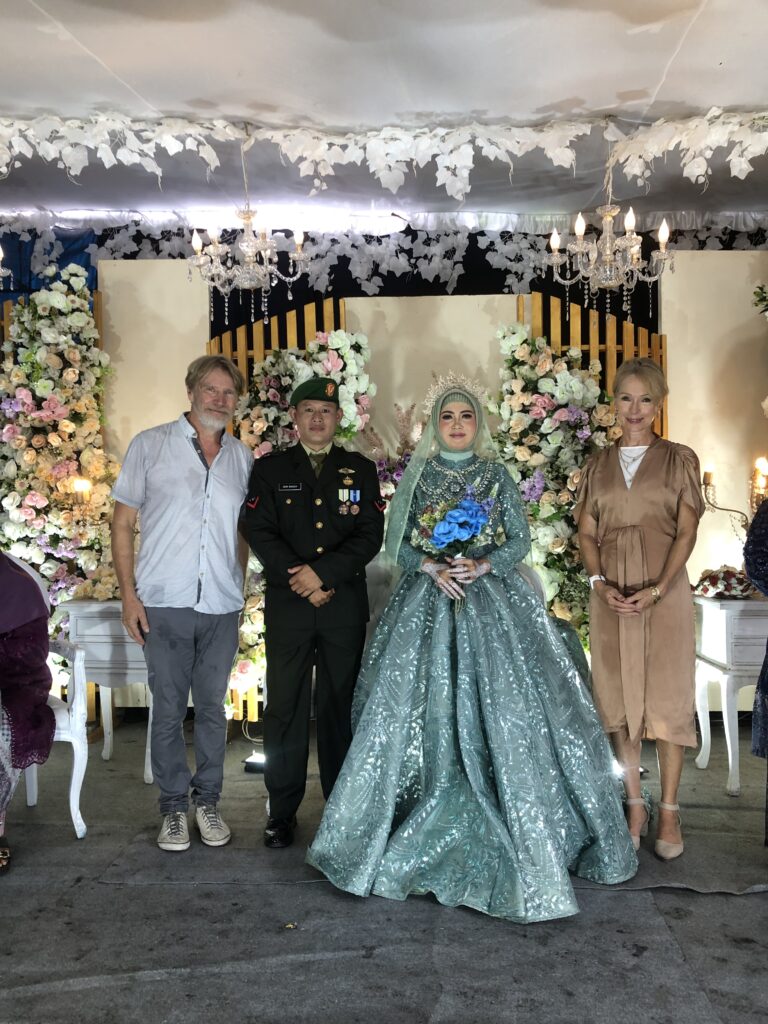
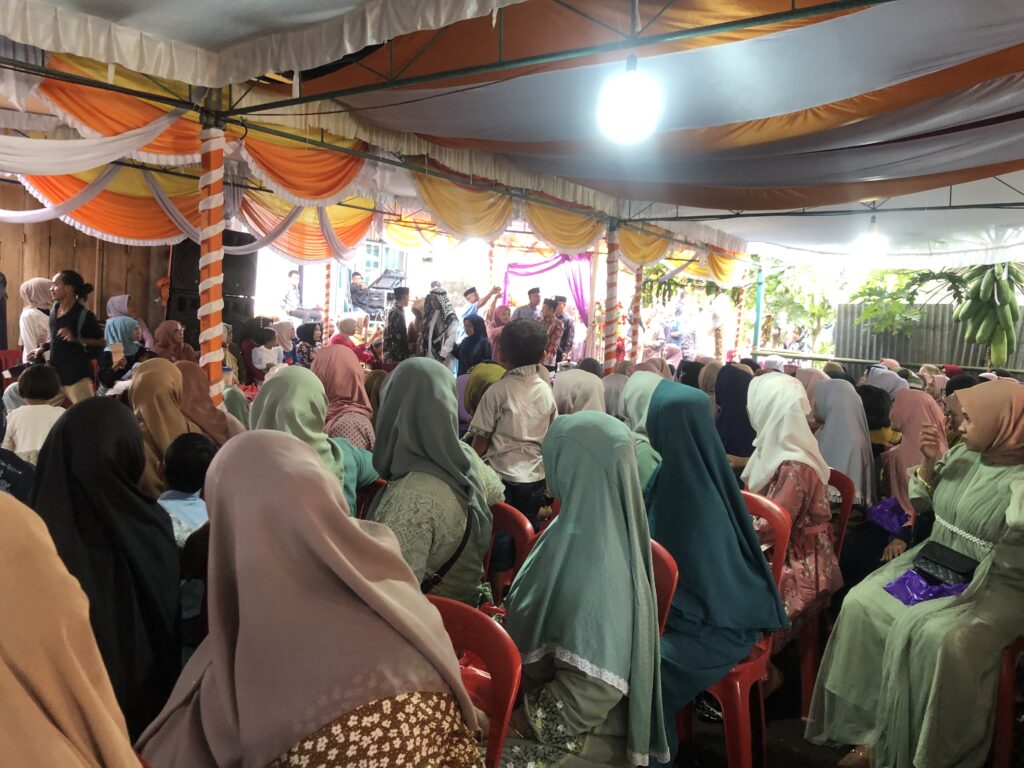


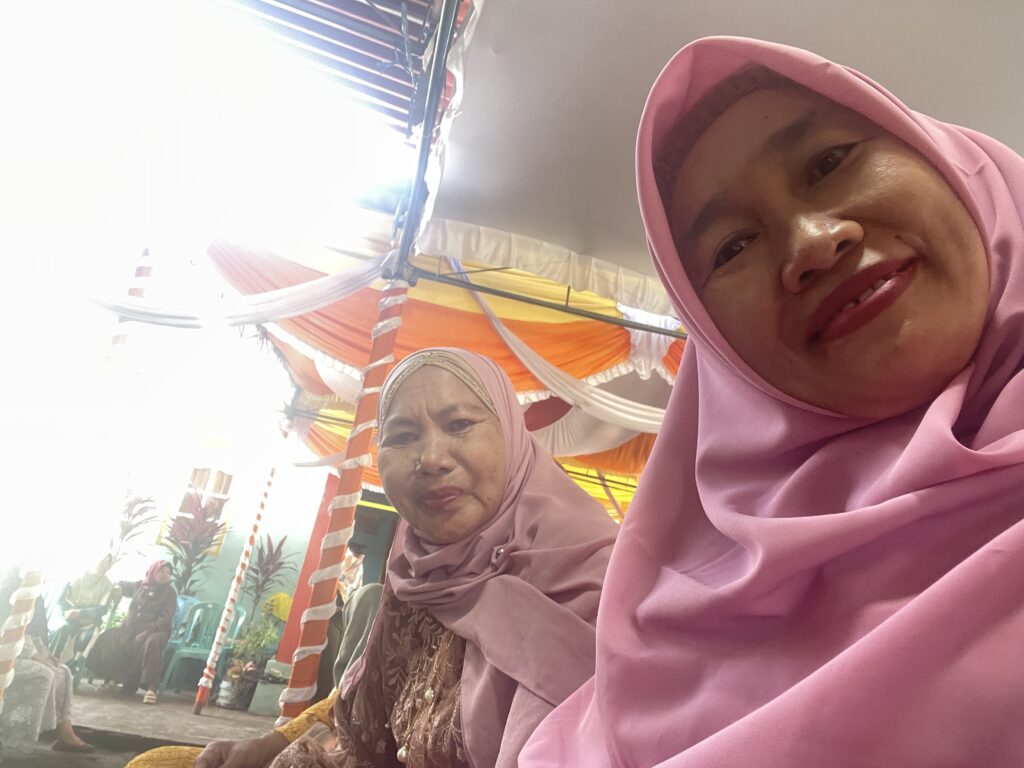

WORST:
- No worsts – just a bit disheartened by all the rubbish in the sea, and on land, which then washes into the sea. The proliferation of plastic packaging on tiny individual items is shocking, but supported by buying habits. Dealing with rubbish is not Indonesia’s biggest priority just now.
FUNNIEST:
- An unexpected situation commonly arose as we walked around dusty streets in some of the more remote areas of Indonesia. Groups of very conservatively dressed Muslim women would approach us, giggling, to take a selfie. We would not have dreamed of approaching them with the same request – but we slowly realised that probably would have been fine too. As time went on, our images were captured in many family photos.
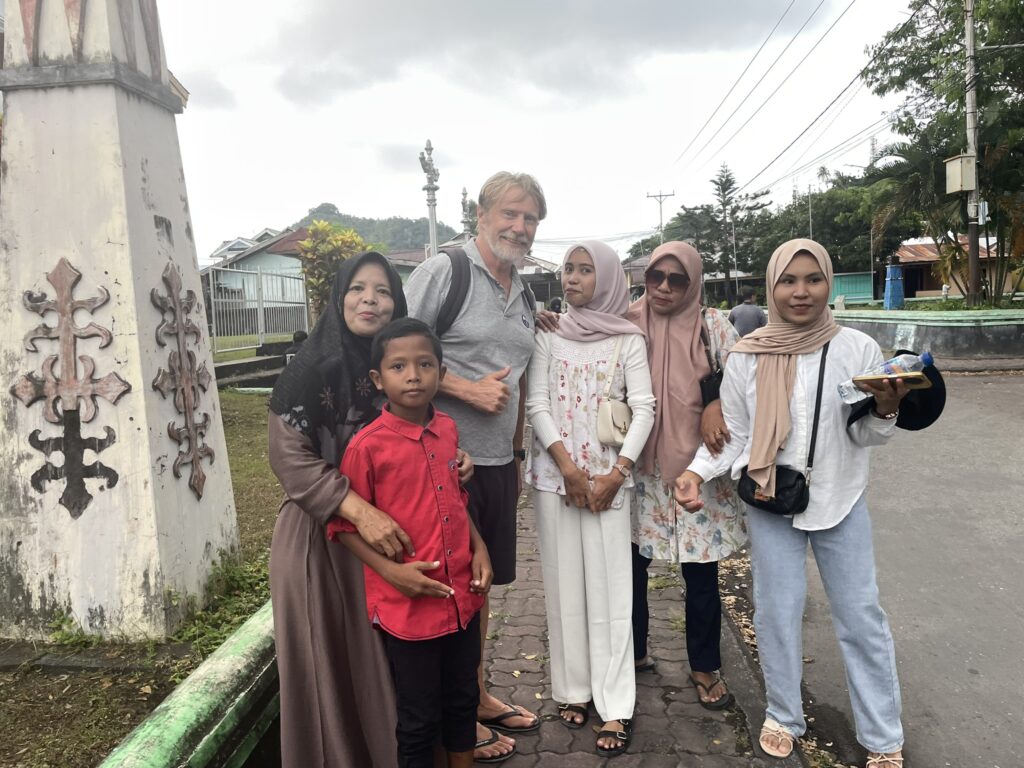
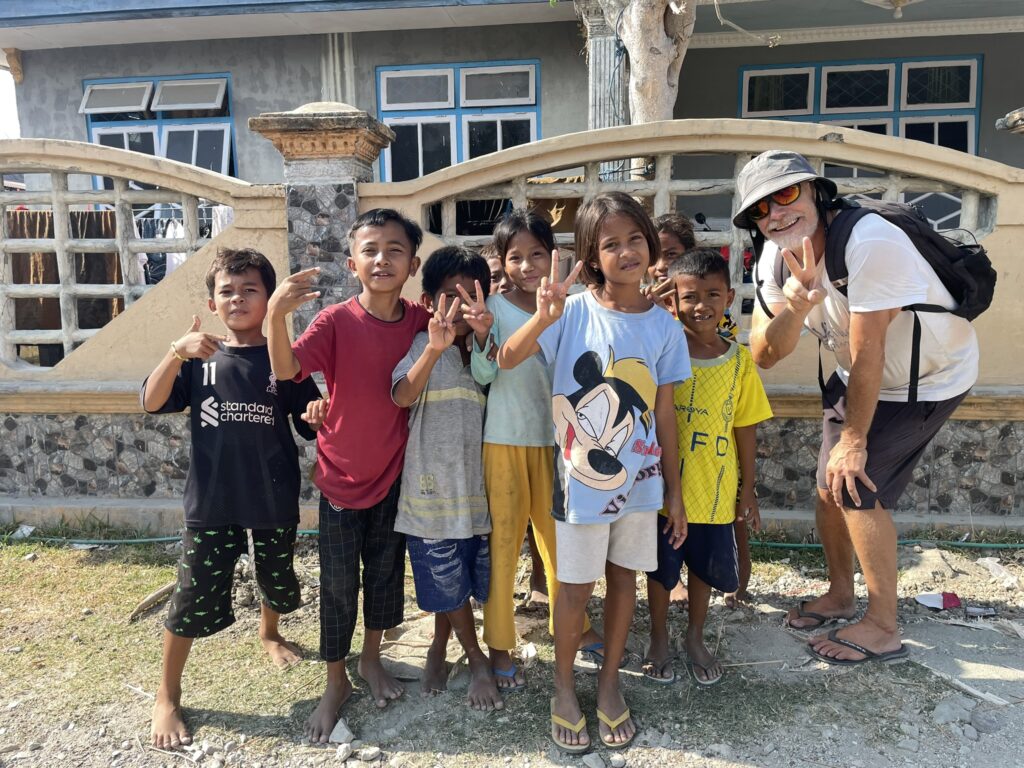
FOOD AND BEVVY HIGHLIGHTS:
- Big Spanish Mackerel caught day 1 of passage from Oz to Indonesia.
- Home made Nasi Goreng and crispy fried bananas in Tual on the first day in Indonesia.
- Mi Goreng Specials – varied but usually very good.
- Satay chicken on sticks straight from a road side grill.
- Gado Gado; stir fried vegies and tofu or tempeh smothered in satay sauce.
- Yellow Rice; a coconut/tumeric dish often prepared for special occasions.
- Cooking class
- Nutmeg jam
- An incredible buffet on Banda Neira in the stunning Cilu Bintang colonial mansion.
- Street food in paper lined with banana leaf. (Most of it a mystery, but several delicious things!)
- Cinnamon tea
- A hand of tiny Lady Finger bananas
- Wine made in Indonesia from Australian grape juice, in order to skip the high cost of importing wine.
- Street food – almost every mystery thing we tried was delicious, and if we got a local recommendation, even better. It appears eating from the stalls that line the main streets in any little town was how many people actually had dinner.
- Coffee. We came to quite like the flavoursome Indonesian coffee beans, finely ground so as to form a sludge in the bottom of the cup.
- Iced tea – the normal accompaniment to a meal.
- Omelette fried rice – another often repeated dish.
- Lolly pops! No chocolates to be found for the first mate’s birthday, so Lolly pops it was!😂
- Strange cakes. At most markets, there was a stall or two selling delightful looking confections, but we discovered they weren’t actually sweet. Their appearance turned out to be the best bit.🙄
- Dragonfruit juice. The jarring purple colour was a little like beetroot, as was the earthy taste.
Foodwise, shopping was generally straightforward if we stuck with fresh fruit and veggies, but dairy products were of course, pretty hard to come by. Eventually in Lombok we found a European style supermarket and bought butter and cheese, which tasted like heaven on a stick after all those months! There were little markets in most places, with at least a couple of things to buy, and much more in bigger towns. We ate almost exclusively vegetarian, as we could not quite come at buying chicken, for example, straight off the table, crawling with flies from the markets. We understood that we were eating exactly that chicken from a road side stall – but that felt ok for some reason. We enjoyed the often unknown varied fresh food from markets and small cafe/ restaurants and street stalls, and appreciated the smaller portion sizes. The smaller serves even in tourist areas was a relief, and I was interested in the correlation of portion sizes and (lack of) obesity in Indonesia. Traditional Indonesian cuisine emphasizes fresh ingredients, vegetables, and spices, with less processed foods compared to our western diets, with fish and tofu often taking centre stage. Daily life is still relatively active in villages that depend on fishing and farming. Shall we take a leaf from their book?
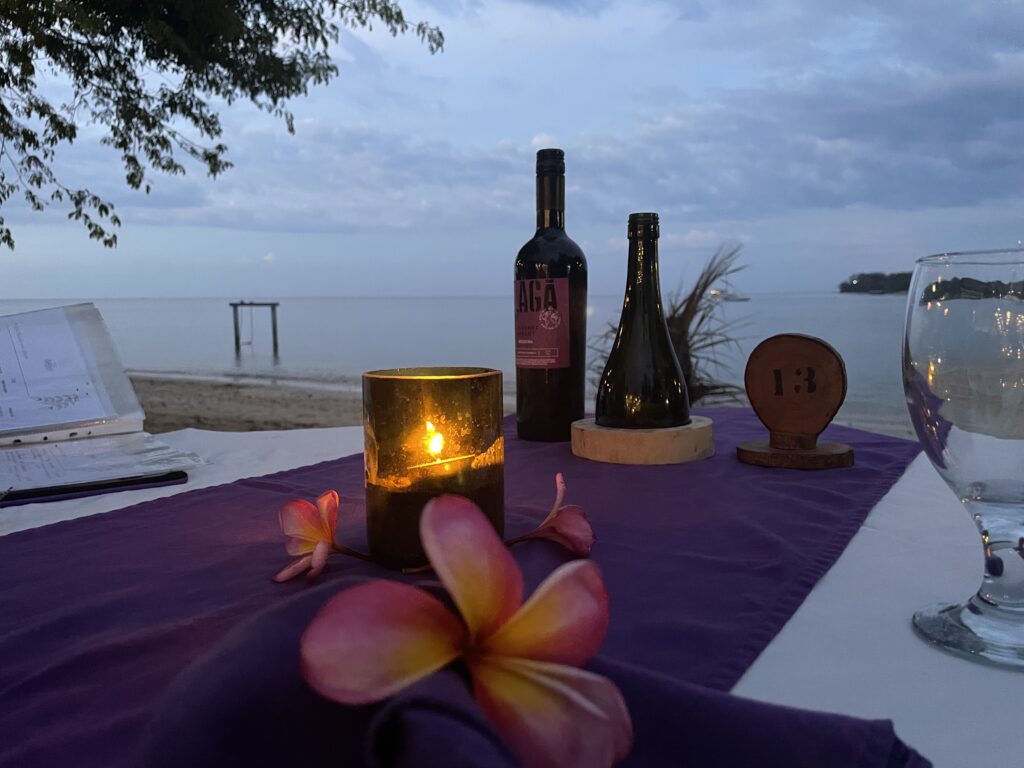

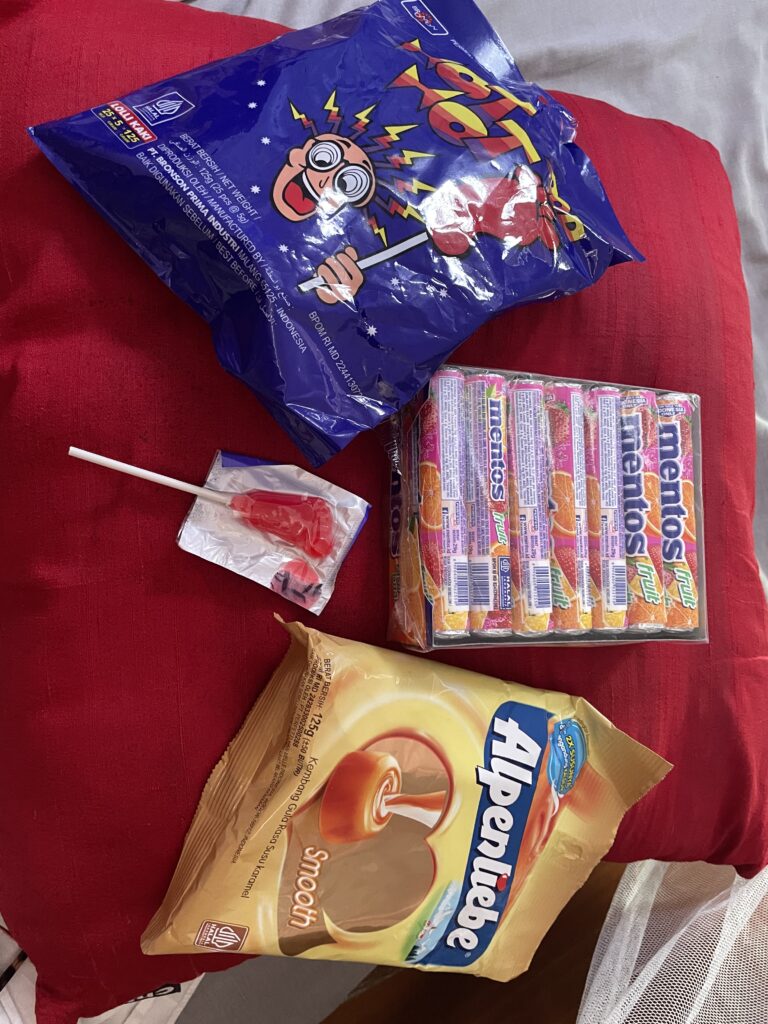
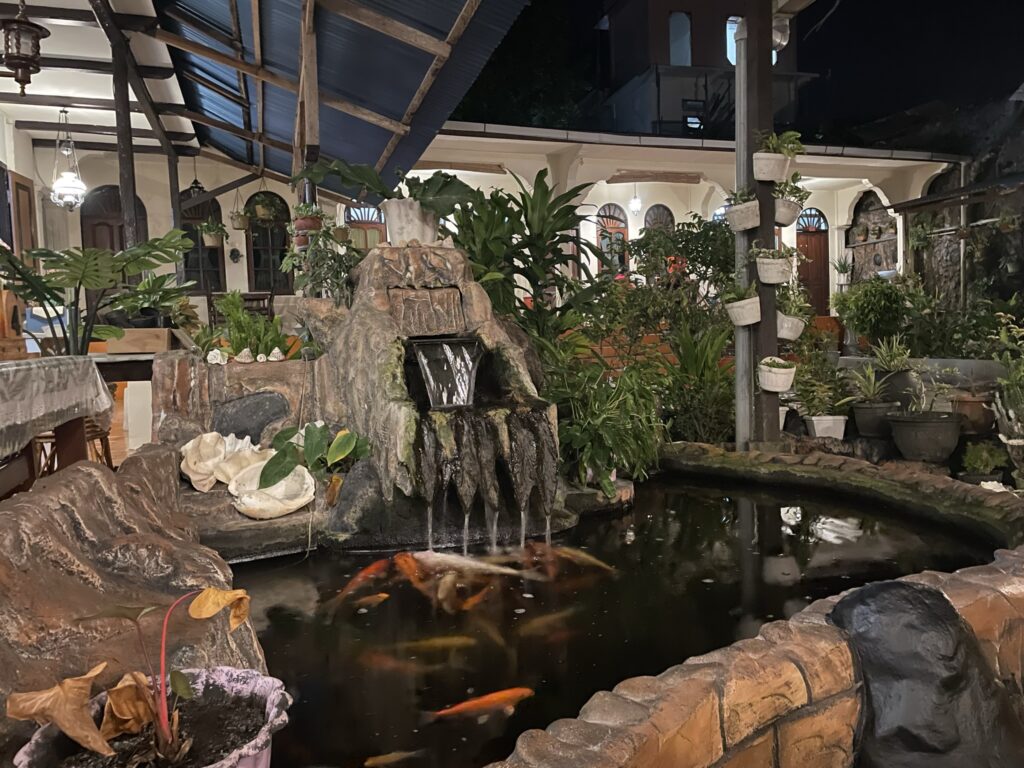
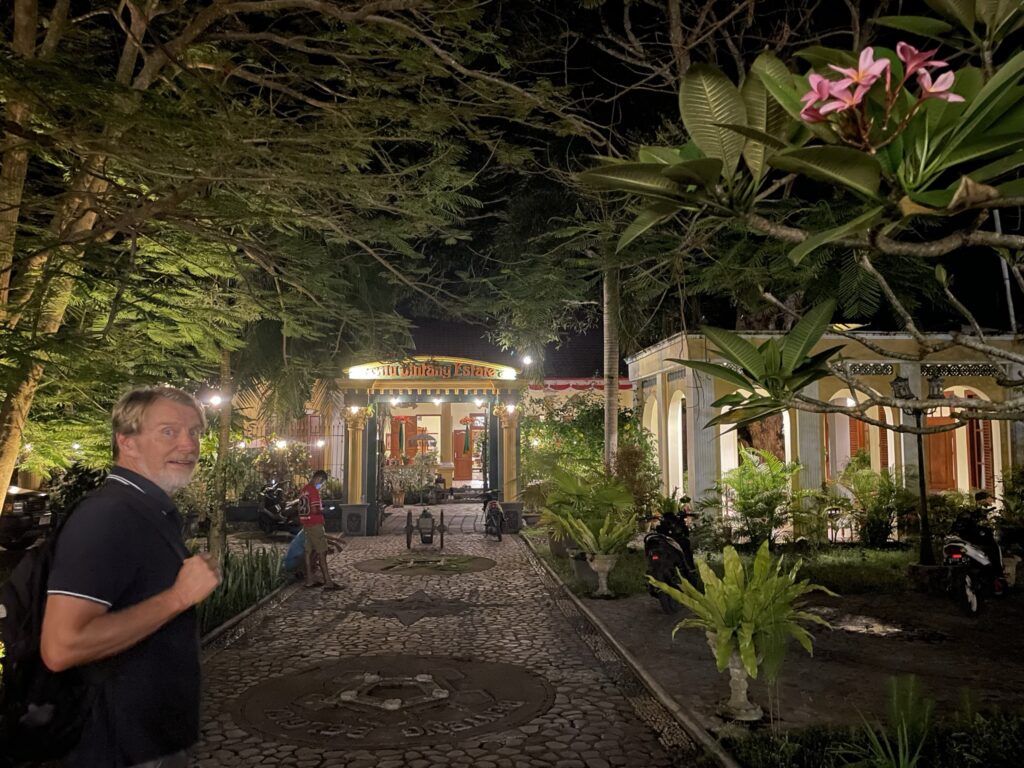
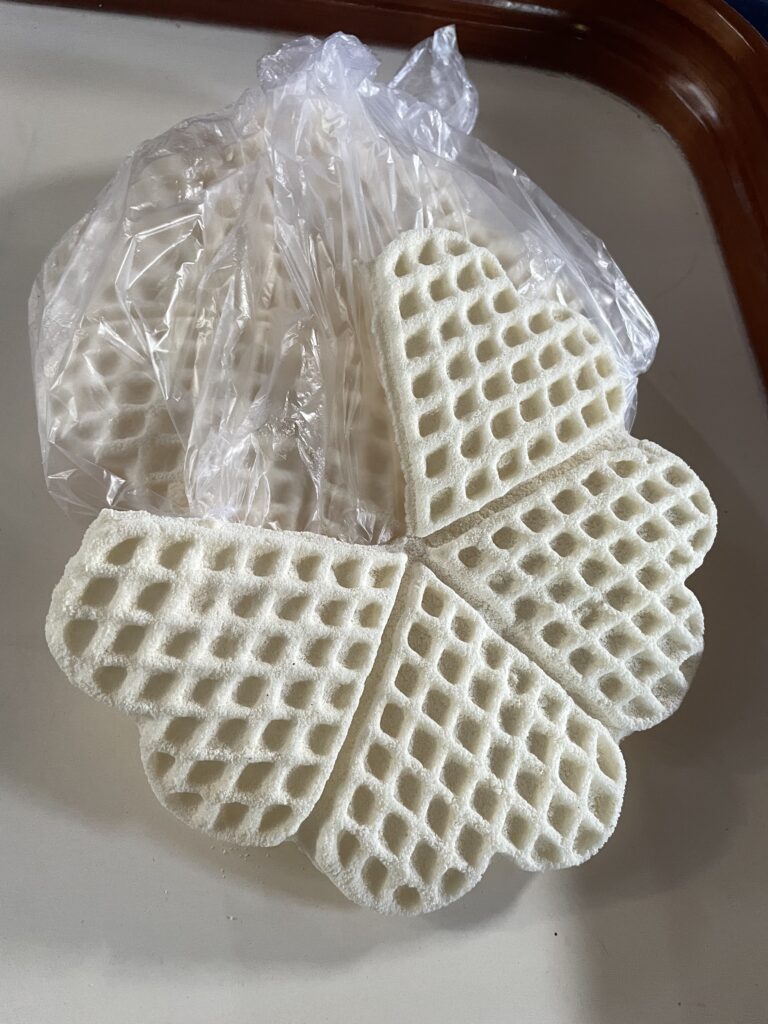
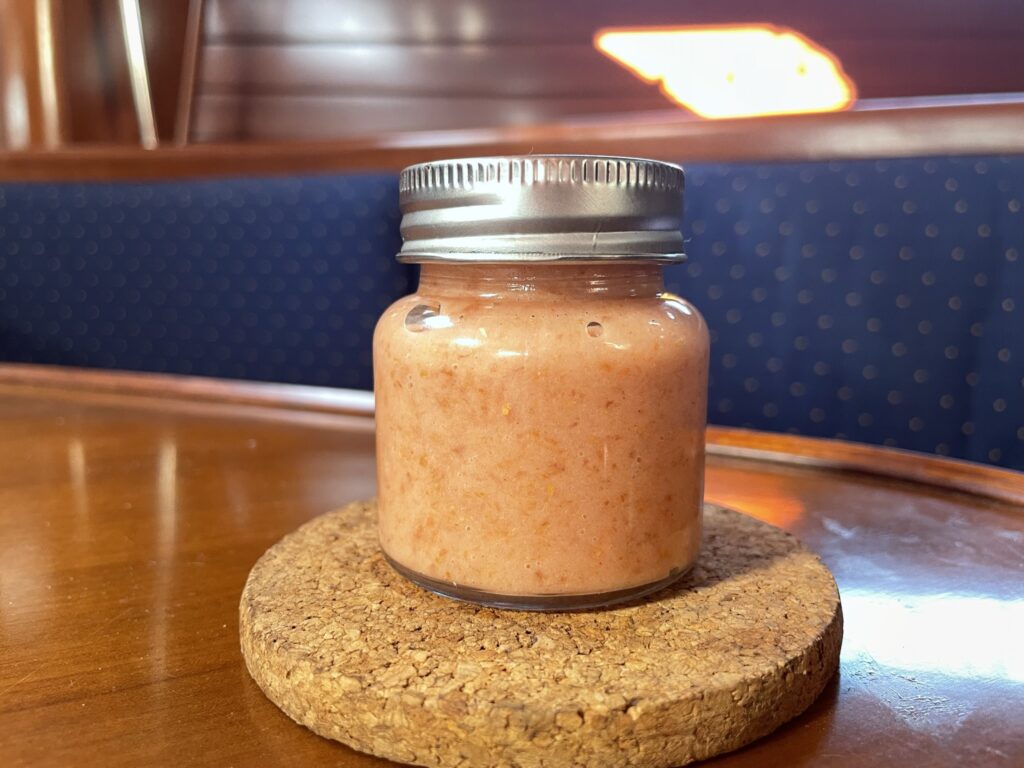
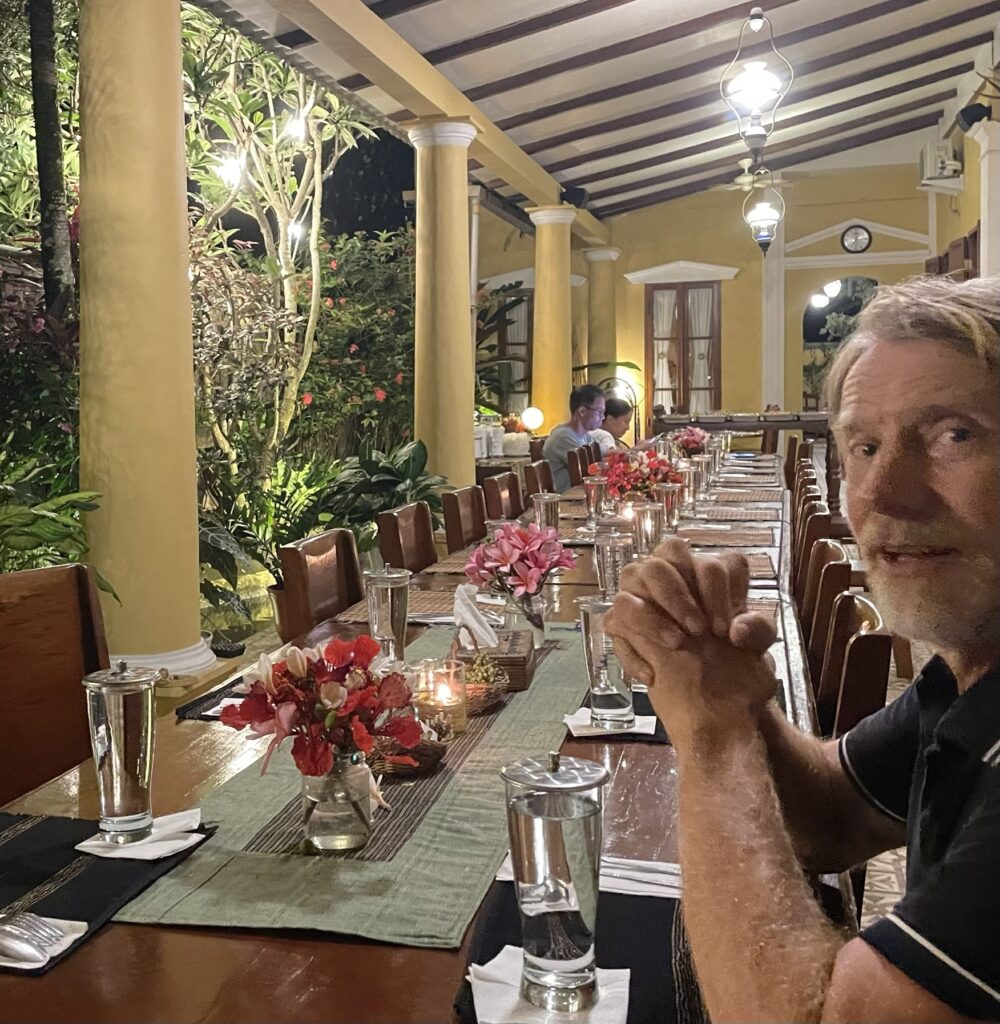
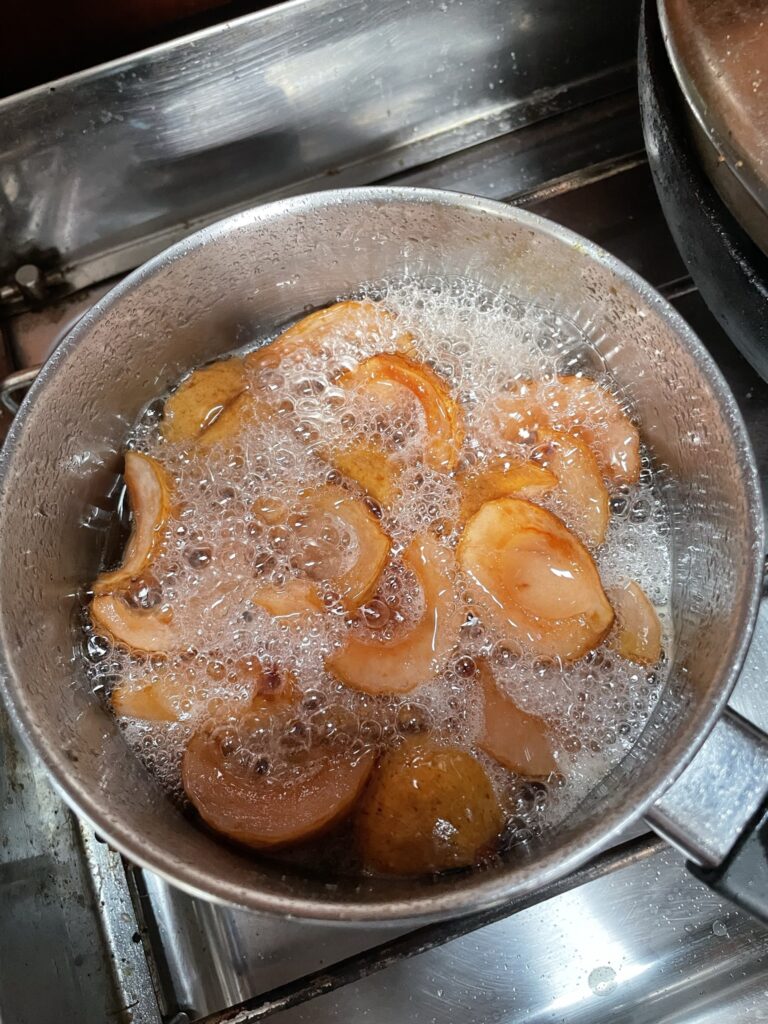
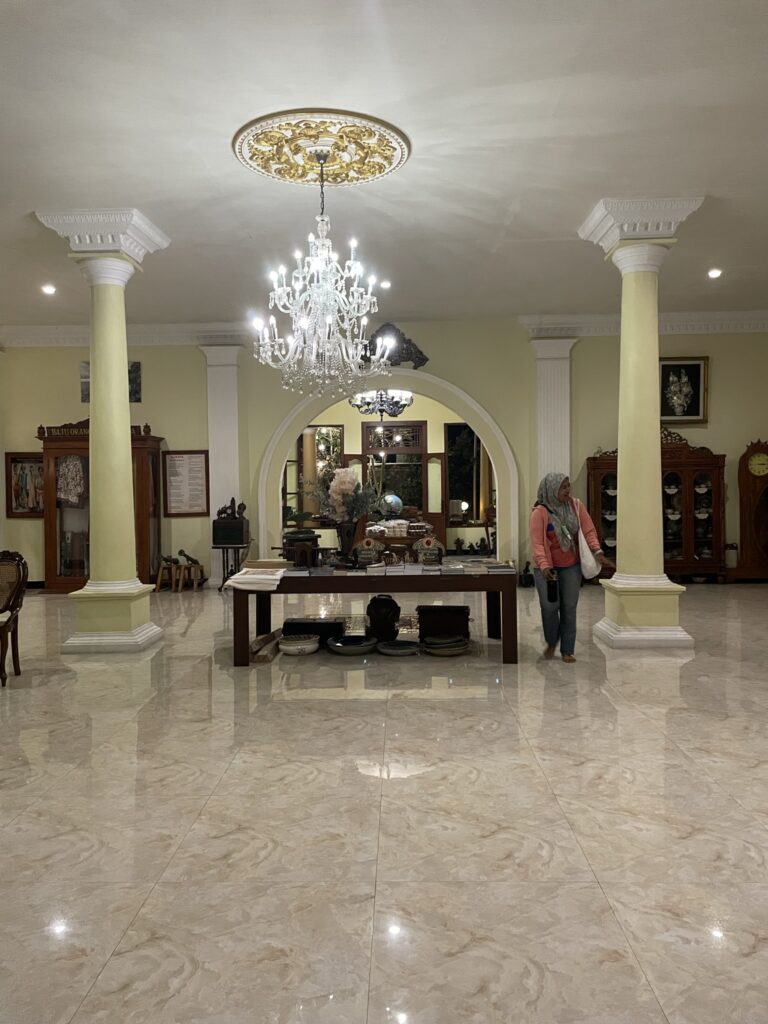
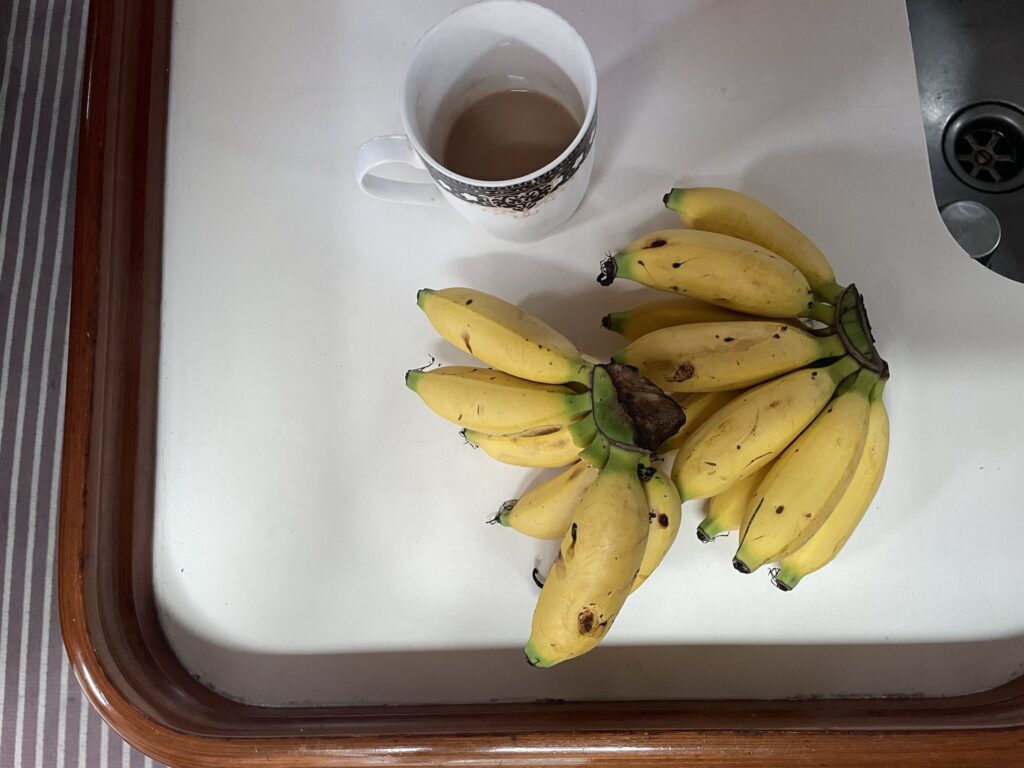
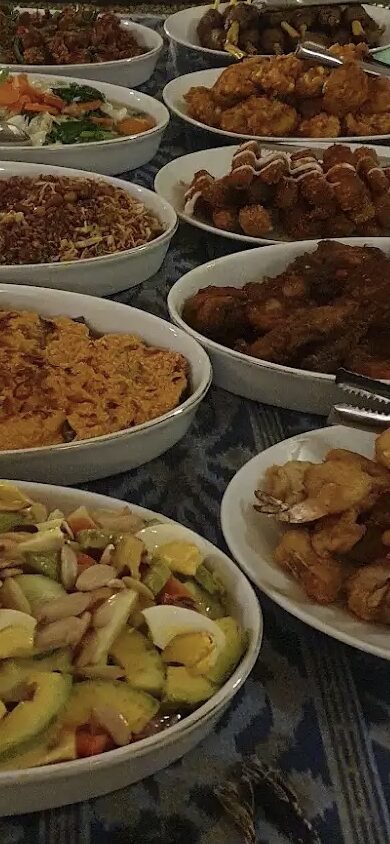
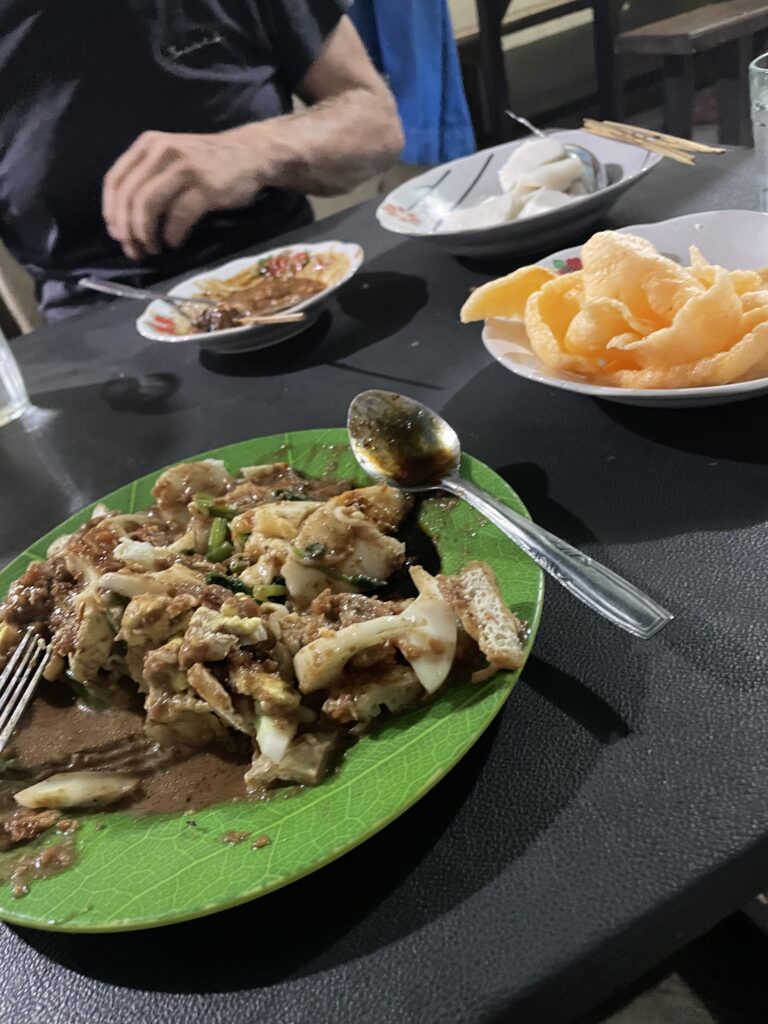

BOAT WORK
Very little to report for boat work, but many new supplies being purchased in view of our return to Indonesia, including mosquito nets, toilet fixing kit, zinc anodes…. the list goes on. The Captain is on a shopping spree as we speak.
THE SWEDISH STUDENT:
Hej!
Det visar sig att man inte behöver Svenska i Indonesien, och vår resa var mycket mer ensam än vanligt, så vi bara prata tillsammans. I Engelska!
And lastly, we finished our time in Indonesia in Bali, after leaving the boat at the “secret” Gilli Islands in lovely Lombok while we scuttled home for family business. We have much unfinished business in Indonesia; whale sharks and Mount Rinjani to start with!
